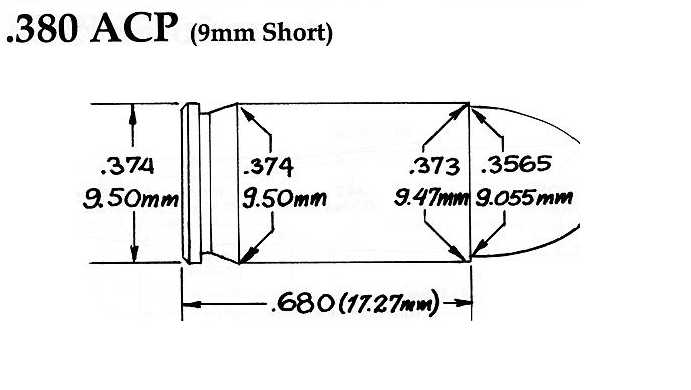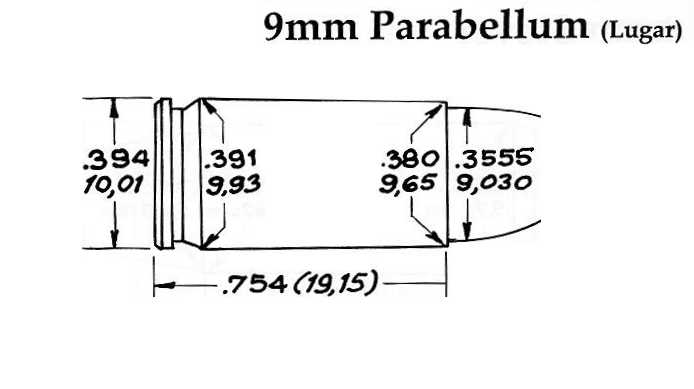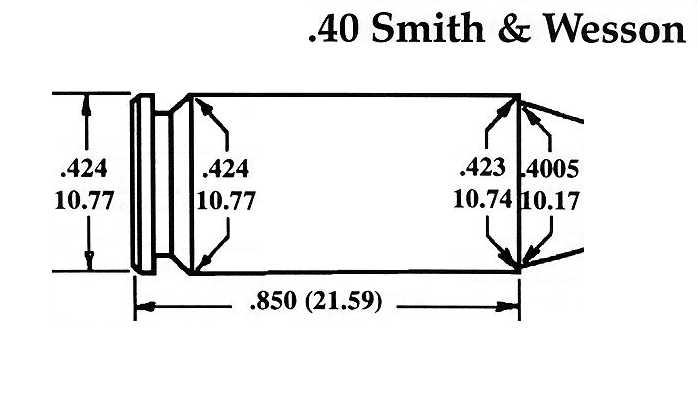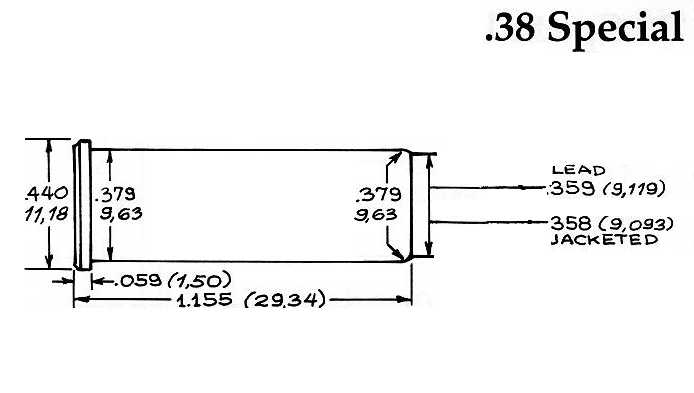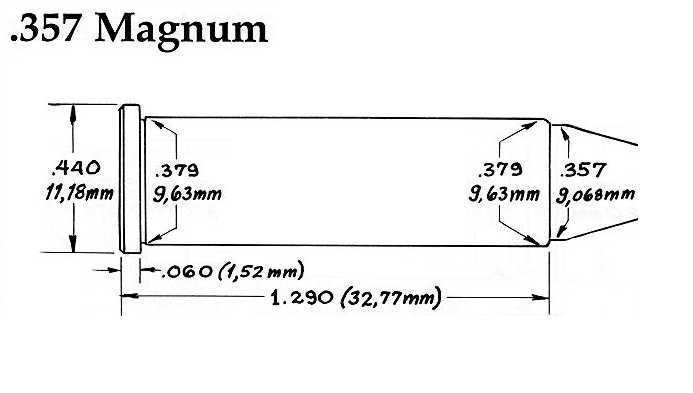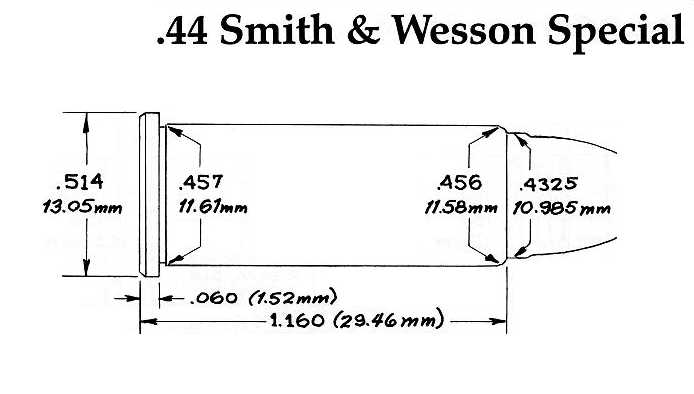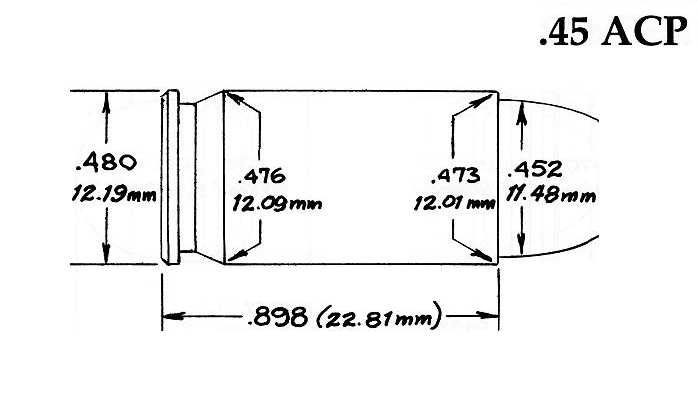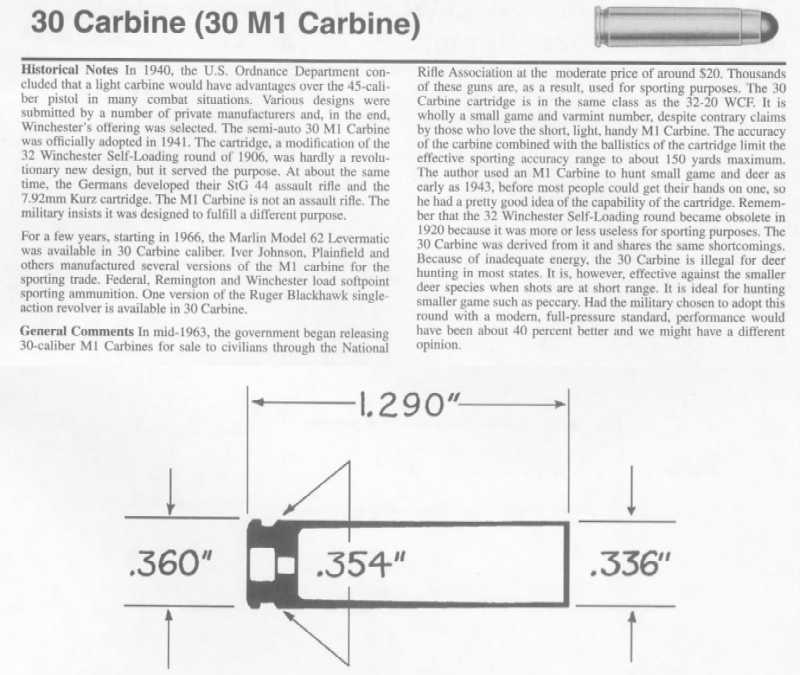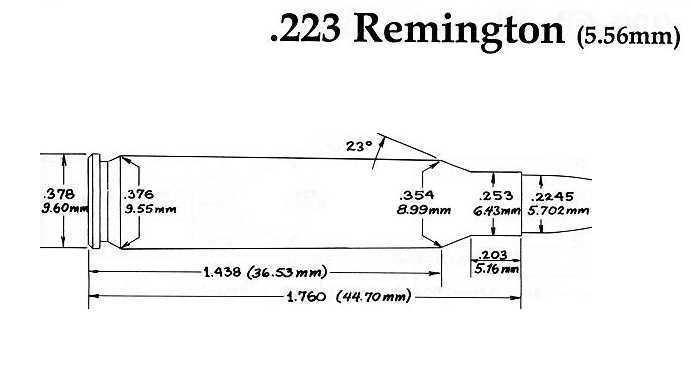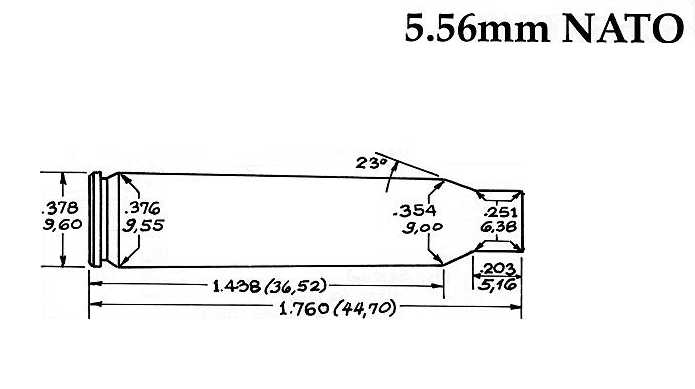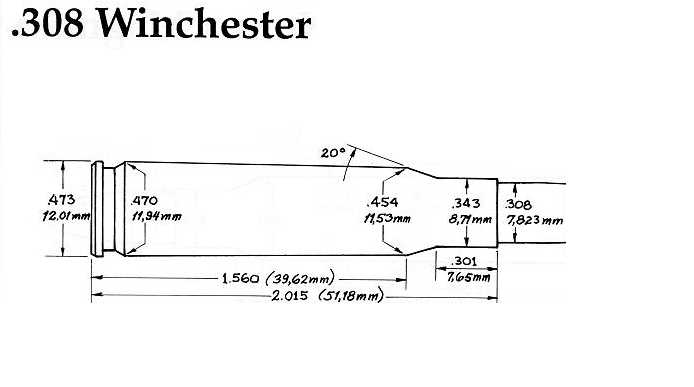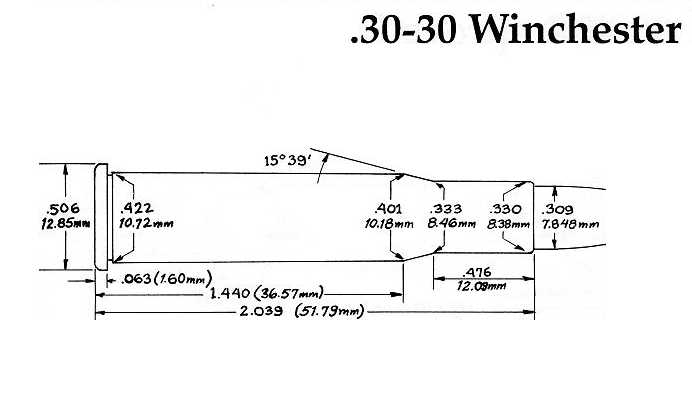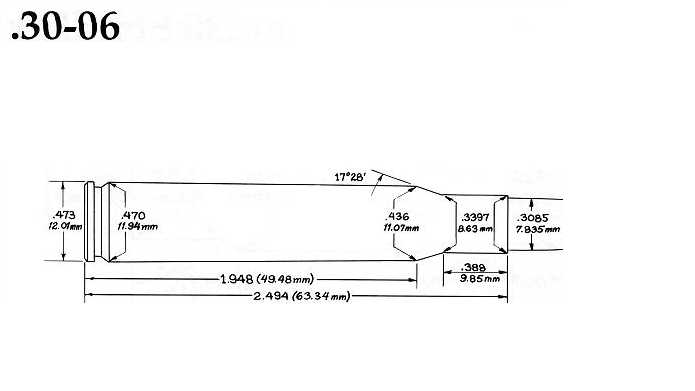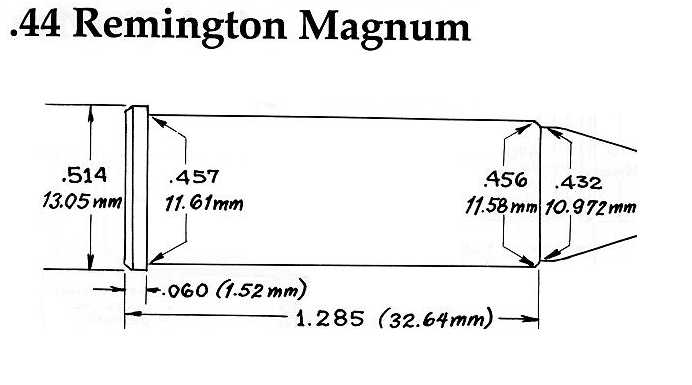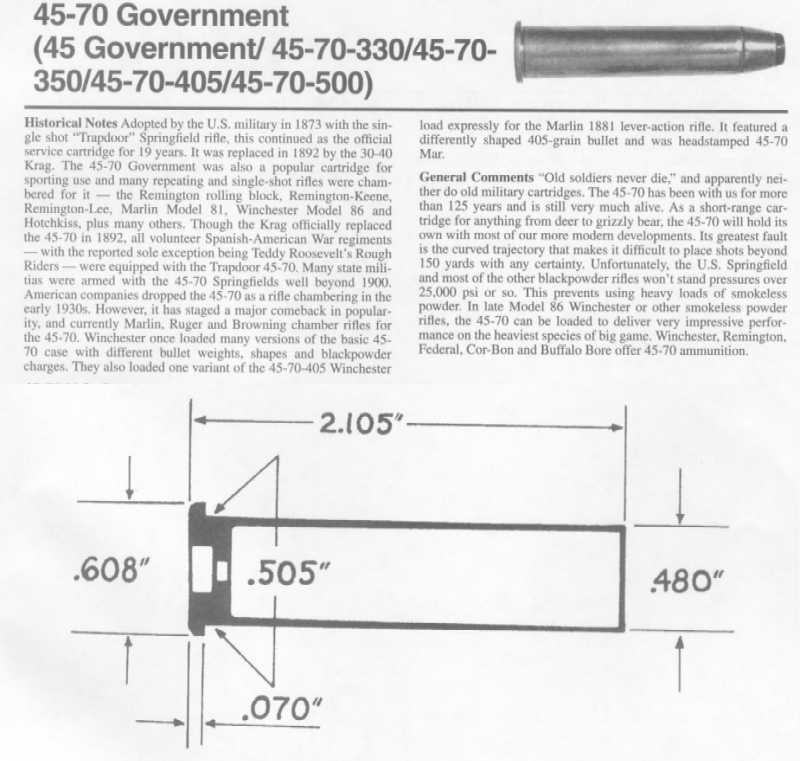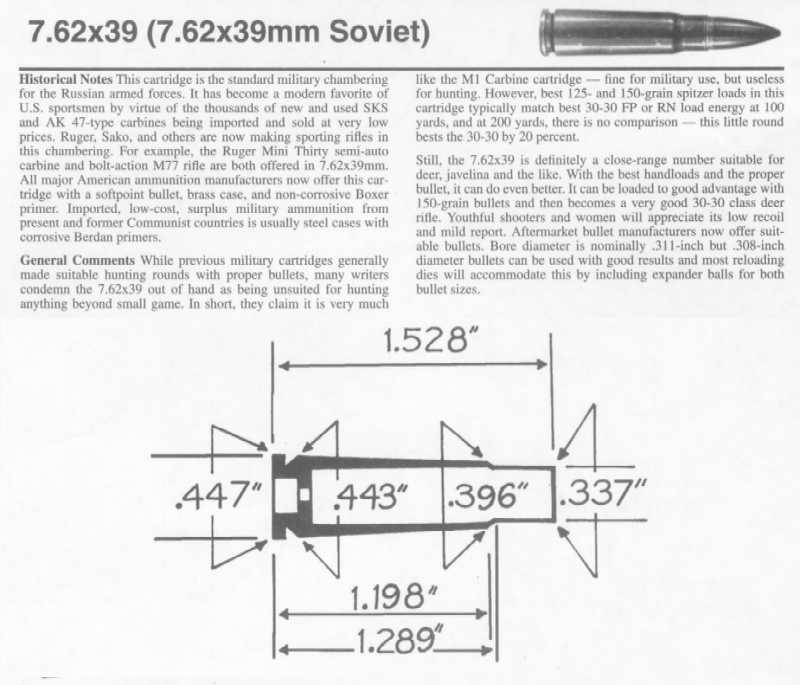|
Disclaimer: I'm not trying to give reloading instructions,
but, merely, to describe the process for a 1st-timer.
If you have access to an experienced reloader,
IMPOSE UPON THEM TO LET YOU COME WATCH AND THEN RELOAD SOME
OF YOUR OWN, UNDER THEIR EXPERIENCED and WATCHFUL EYE!!
After you have read-thru the following material,
watched some of the videos and thought-thru the tools
you want to use to start reloading...
come back here and read this
12-step Plan for reloading.
It will attempt to describe each step FROM going to the range
with your factory ammo to 'make some fired brass'
TO your next trip to the range with your "reloads".
(Jan2013) I saw this video about using a Tumbler to clean brass.
Thumbler
at Midway: $165
Thumbler
& $35
Pins
The reloading mfg and distributors provide excellent information
and recently more-and-more video tutorials.
If you have the time and internet-access...
several short tips
by Lee Precision
variety of resources
by Brownells
resources from
MidwayUSA
Podcast: GunTalk.com
Tom Gresham is a 2nd generation Gun Journalist guy.
He has a syndicated radio program that airs on Sunday afternoons for
three hours. The program is podcast and
available late Sunday eve
or Monday.
He discusses current political news/issues about firearms,
has guests from the various manufacturers,
and listener "call-in".
GunsMagazine provides their
50-year-old editions online.
YouTube.com is an excellent resource
to consider ReLoading...
each 'ReLoader' will have some particular tools and techniques
that work for him...
if he's alive with eyes, hearing and fingers,
it's likely an OK technique...
Overview for
beginners
(turn down the volume, it has a music-background with screen labels,
no vocal)
- 00:00 - Intro
- 00:58 - Reloading Presses
- 01:25 - What happens when a cartridge is fired
- 02:35 - Why Handload?
- 04:51 - Reloading Dies
- 10:12 - Lubricating Cases
- 11:35 - Basic Case Prep Tools
- 13:49 - Calipers and Scales
- 15:00 - Powder Measures
- 16:22 - Components of a Cartridge
- 17:01 - Case Tumbling
- 18:39 - Quality Control of Brass
- 19:41 - Installing the Shellholder and Resizing Die
- 20:52 - Sizing Cases
- 23:06 - Trimming Cases
- 29:19 - Checking for Fit in the Rifle
- 29:36 - Priming
- 32:35 - Throwing Powder
- 37:25 - Setting Up the Seating Die
- 39:00 - Seating Bullets
- 43:11 - How to Set the Seating Die to Copy a Round
- 45:03 - end
AmmoSmith.com video-library
forum
'Basic Reloading' uses an RCBS-RockChucker SingleStage Press
AmmoSmith
-
Quick Tips: New Unprimed Brass
-
Quick Tips: Cleaning Primer Pockets
-
Basic Reloading: Sizing Pistol Brass
-
Basic Reloading: Trimming Pistol Brass
-
Basic Reloading: Deburing Pistol Brass
-
Basic Reloading: Flairing Pistol Brass
-
Basic Reloading: Priming Issues
-
Basic Reloading: Priming Pistol Brass
-
Quick Tips: Are Your Primers Seated Right?
-
Basic Reloading: Charging Pistol Brass
(shows both: RCBS-Little Dandy +AND+ Lee Auto-Disk )
-
Basic Reloading: Seating Pistol Bullets
-
Basic Reloading: Seating Cannelured Bullets
-
Cartridge Specific Series: .308 intro
UltimateReloader.com
NWguns (magazine)
Pistol Basics...
Presses,
Cartridge,
Reloading,
Bullets,
Powder
Gavin
The "T-7" is a heavy-duty Turret Press
The "AR-308" videos use a SingleStage Press
FredHart
Jiujitsu2000
ADDED: 01feb2013... these are long, thorough and GOOD videos !!!
223 1hr30min
30-30 1hr
30-06 1hr15min
30-06 older: 12/01/19
Henry AR-7
Hickok45
has a 30min video as an overview of
Reloading-Decisions,
at least watch the first minute... he has a good opening...
(shows Single-Stage -vs- Progressive presses )
Ammo
... Crimping is important on many cartridges,
like: Semi-Auto and .30-30 cartridges
Lee crimp die how-to
RCBS Pocket Swager Combo Die
Hornady Cam-Lock Case Trimmer
Setup Hornady Reloading Dies -p2 Need p1
Setup Hornady Reloading Dies -P2
Primers What You Need to Know in HD
Hydraulic primer removal
Making Primers P1
Making Primers P2
A simple way to remove berdan primers
Reloading Berdan Primed Ammunition P1
Reloading Berdan Primed Ammunition P2
... and for-fun...
Fun with C3H8:
1
2
3
... "Survival" (.22LR)
Henry
AR-7
uTube
Blog
-vs-
Marlin
Papoose
uTube
-->
another set of ref-links:
Overview of the Handloading Ammo process
overview
Varmint Al
Primer Pressure
Re-Loading Pistol Ammo
Re-Loading Rifle Ammo
How to adjust Re-loading Dies
The tools described below have a variety of opinions/preferences
by each 'reloader'... read, observe, learn and try to improve.
Good Luck and BE CAREFUL!!
Lee, Lyman, Hornady, Forster, RCBS, Dillon, LEWilson, Redding,
Bonanza, etc+etc all make equipment and tools for the reloader.
I doubt any person can tell you a particular tool that they LIKE
that you can expect to have the same opinion/experience AFTER
you buy/use one...
So, expect to collect a "few of everything" over time...
This "list" is not intended to promote or recommend specific products,
but rather to itemize and briefly describe the
purpose of the reloading equipment.
Yes, I have most everything mentioned below...
and most likely a lot of the stuff that I suggest you not-get
or wait to get... just get started and enjoy it...
I've found MidwayUSA.com in MO to have excellent customer response,
An order is seldom late and items are rarely out of stock more than
a few days. The example tools are mostly 4-5-Star rated.
Check their "Reviews" for more ideas and alternatives.
I mostly reload for 9mm and .223 (I have several others... just "mostly").
the 'Die' sets have enormous variation as to what you can find/pay.
the 'Lee' discussed below are an excellent value and you can easily
re-invest in some particular die (caliber) at a later time.
Watch for Estate-Sales and Garage-Sales.
many folks have 'done that' and are ready to release their equipment.
also, the widow/family may not know it's value or how to use it and
will sell it cheap... before they throw it in the scrap!!
Warning... reloading is a bottomless pit... turn-back now!
| Reloading Tools
|
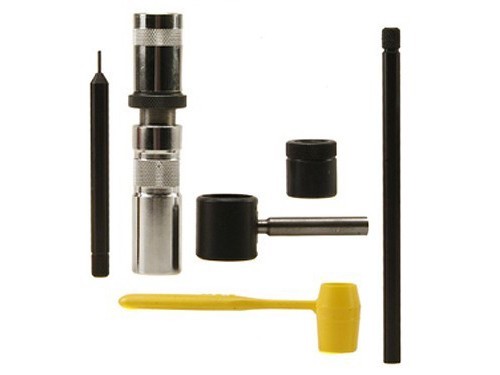
| $27 Lee makes their "Lee Loader" kits for
pistol
&
rifle
calibers, no need for any of the rest of this Reloading-Equipment...
just what Marshall Dillon likely had in his saddle bags...
These rifle kits are for 'neck sizing' only.
(brass fired from a bolt-action, reloaded for that same rifle)
See this video that demonstrates the "Lee Loader" for .38spec
|
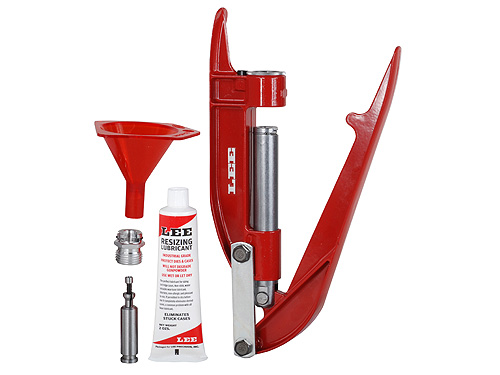
|
$43 Lee Hand Press™
- uses regular dies, just not bench-mounted.
2-part video demonstrating the Lee-HandPress™
P1
P2
Just FYI, Lyman still makes their hand-held reloader kits
that apply more to 'Cowboy' calibers (eg.
.45 Colt &
.30-30),
that consist of needing their
Small Handles,
for handgun loads and/or the
Large Handles,
for the Rifle calibers.
|
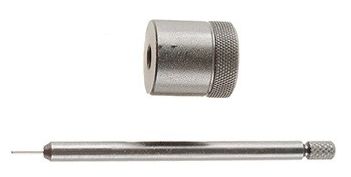
|
$ 7 DeCapping Rod & Base
Manual Decapping is time consuming, BUT pin-deccappers in the
SizingDie may not remove crimped-primers... AND this encourages
a little more examination
of brass for splits and dings for rejection.
NOTE: I have 'worn-out' one .22-cal decapping-pin
(replacement $2),
after several-thousand cases ( .380, 9mm, .45, .223, .30-30, .308 ...)
I never use my .30-cal pin+base.
CONSIDER getting the .223-Lee-Loader (above), as it contains the
decapping pin+base and you have the low-tech reloading kit.
A modest-sized
anvil,
a Stubby hammer and
a Dead Blow can also be useful.
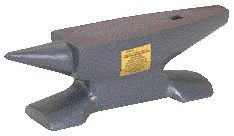
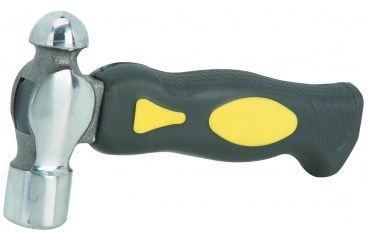
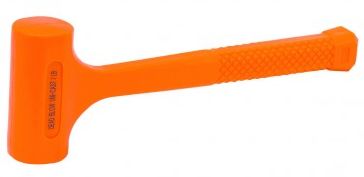
|
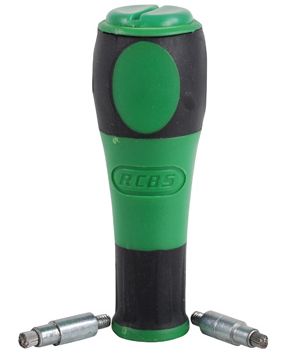
|
$15 RCBS Primer Pocket Brush
The Primer Pocket contains residue from the fired primer.
To get a 'Good Fitting' primer, it is best to brush-out the crud.
This particular tool comes with both Large &
Small Primer Pocket sized Brushes.
Replacement brushes are available, the steel bristles do bend
and wear with use.
I do not use the little handle, I "chuck" the brush in a small
rechargeable drill and just "zip-zip" and it's clean.
|

|
$10 Hornady Large-Primer Pocket Reamer, with Handle
$10 Hornady Small-Primer Pocket Reamer, with Handle
After you have removed the primer from your spent-brass,
Ring-Crimped (often NATO brass) will need the primer-pocket
re-sized to accept a new primer.
|
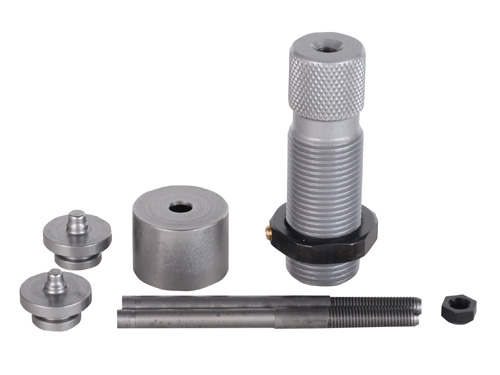
|
$40 RCBS Primer Pocket Swage die
The 'crimp' distorts the brass around the primer pocket to
"hug" the primer in place. the above reamer removes this
distorted brass to provide a clean primer pocket,
this die presses the brass back into the rim around the
pocket.
|
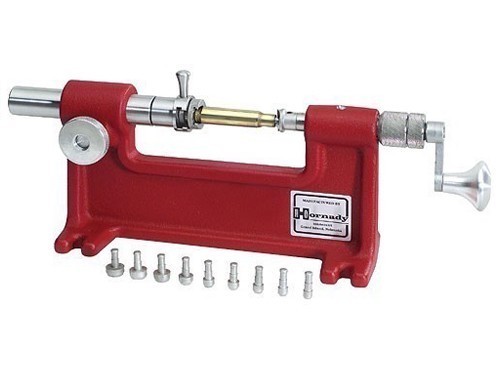
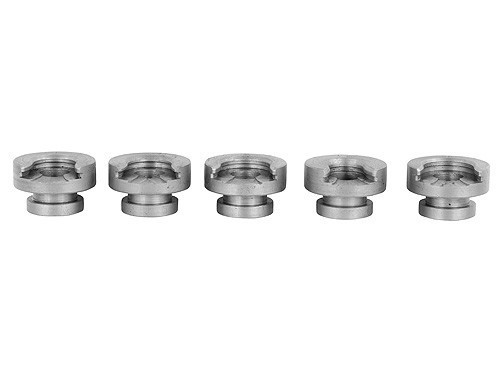
|
$65 Hornady Case-Length Trimmer
$16 Hornady Shell-Holder set(5)
Quick-CamLock of a case for Micro-Adjustable length-trimming.
More applicable to Rifle cases than pistol, but brass lengthens
with use...
And from time to time needs to be trimmed-to-length for
proper chambering.
NOTE: the Hornady case trimmer REQUIRES their brand
of Shell-Holder (Lee, RCBS, etc will NOT work).
-- the hole in the middle of the Hornady ShellHolder is larger.
This items needs to be secured to a "mounting board"
and C-clamped to the work table.
trimmers by:
Forster,
Lyman,
RCBS,
Redding &
LEWilson
|
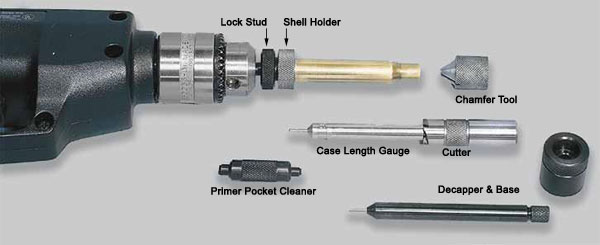
|
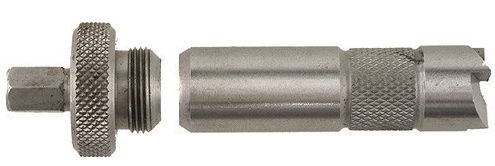
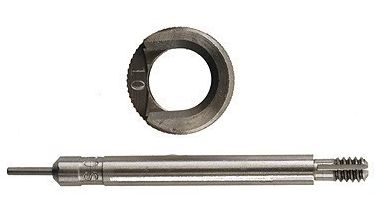
|
$ 6 Lee Trim Cutter and Lock-Stud
$ 5 Lee Case-Length Trimmer and ShellHolder
(one for EACH caliber)
In leu of the Hornady Trimmer (above) which permits YOU to adjust
the case-trim length,
Lee provides these more affordable trim-length gizmos...
For each caliber, you must get the length-rod and shellholder set
(NOT Primer shellholders and NOT Press
shellholders, BUT Trim-shellholders !)
Screw the guide-rod into the trim-cutter.
The shellholder screws onto the LockStud,
insert the case-base and tighten...
Insert the guide-rod into the case and thru the flash-hole,
to rest on the lock-stud.
Then proceed to "trim" the case-mouth to the Max-Case-Length.
Your Thumb+IndexFingers get cramped to do a lot of trimming,
but this can be an affordable beginning or for light-use.
(
Lee details )
for some reason, Pistol-brass just does not need or require
trimming very often, especially if you've already shot it
and now you are REloading it... D'oh
but, rifle brass often does need trimming...
not just because it was lengthened during the firing
but because it was made that way. I guess a lot of chambers
and 'head space' just allow a tad more than the 'spec'.
(when a rifle round is chambered, the clearance or gap from
the bullet to the edge of the bore is head-space)
|
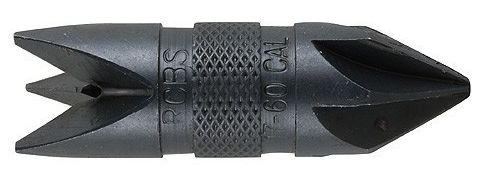
|
$22 RCBS Chamfer and Deburring Tool
after the neck-Trimming, the rough-edge should be removed.
Lee has their in-expensive
Deburr+Chamfer tool,
but it is awfully small and does not hold it's edge very well.
|

|
$11 Lyman VLD Chamfer Tool
Apply lightly to remove unwanted brass-burrs on the INSIDE
rim of the case-mouth after trimming or just to smooth it out.
|

|
$11 Lyman DeBurr Tool
Apply lightly to remove unwanted brass-burrs on the OUTSIDE
rim of the case-mouth after trimming or just to smooth it out.
|

|
$ 8 Lyman Flash Hole Cleaner
the hole between the Primer and Powder may need the crud removed,
and the hole made more uniform for an even ignition.
|
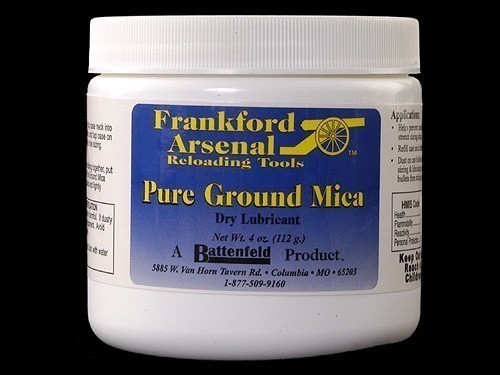
|
Frankford neck-lube Mica $9/4oz.
Mica for Neck Lube.
|
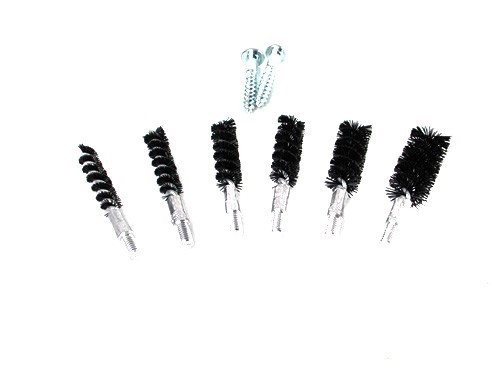
|
Frankford neck-lube brushes $6
Set of Six neck nylon brushes, for applying dry (mica) lube
Needs RCBS, Hornady, Lyman "handle")
|
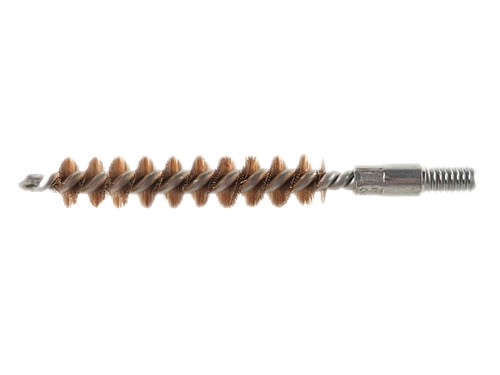
|
Hornady Bronze Neck-Brush $5-pair/.30
A Bronze Neck-Cleaning brush (needs RCBS, Hornady, Lyman "handle")
Several caliber/diameters are avail.
.22-cal
Depending on the condition of fired RIFLE brass, the inside of
the neck may need some attention.
The Bronze brushes can be used to "clean" the inside of the neck.
The nylon brushes can be used to apply case-lube inside the
case neck (either: wax, cream or dry-mica).
The lube might be applied inside the neck with a Q-tip.
|
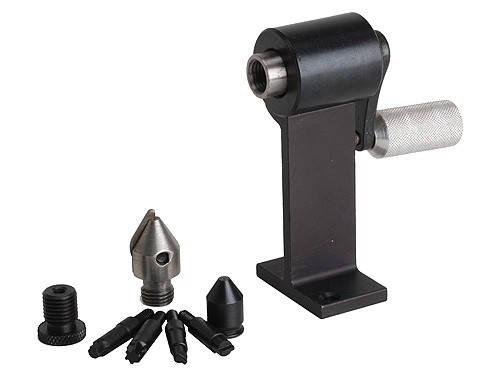
|
$30 Lyman Case-Prep Kit
Another combination of tools
(instructions)
can ease the strain on finger-tips.
The manual-handling of case-prep can become tedious...
this tool helps.
|
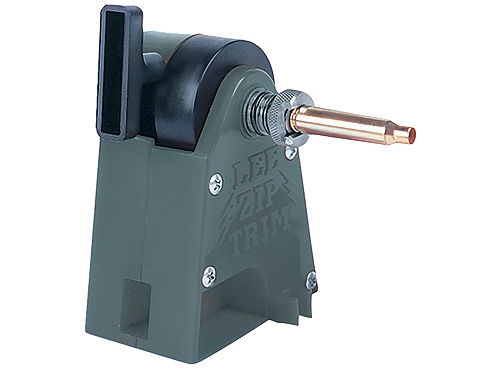
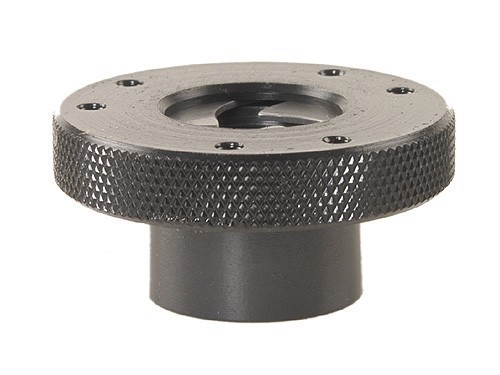
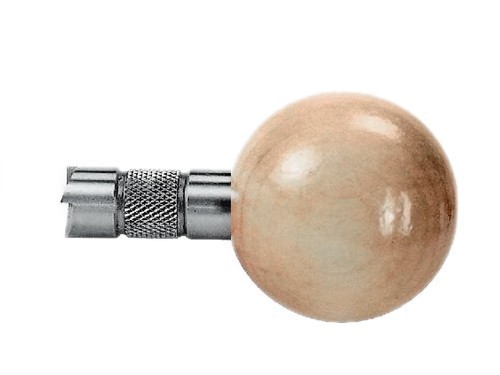
|
$20 Lee - ZipTrim™
$12 Lee - 3-jaw Chuck (no shell-holder needed)
$ 7 Lee - Ball-handled Cutter (easy on the fingers)
Zip Trim gadget (elec/batteries not needed).
Can be used in leu of an elec-drill for many case-prep chores.
video:
Lee ZipTrim™ with Three Jaw Chuck
| | |
|
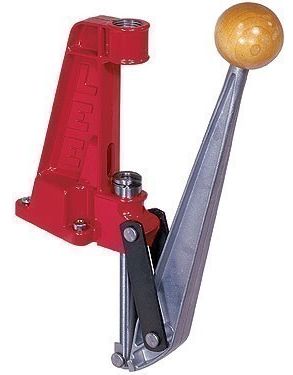
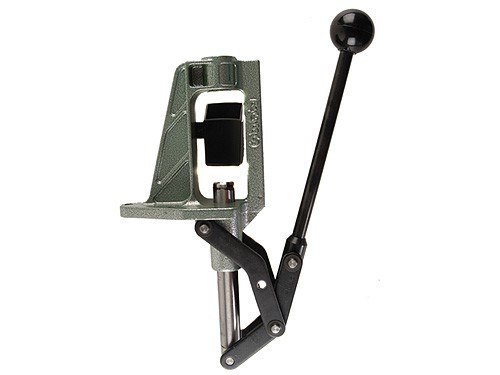
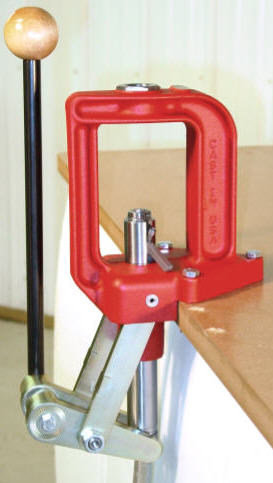

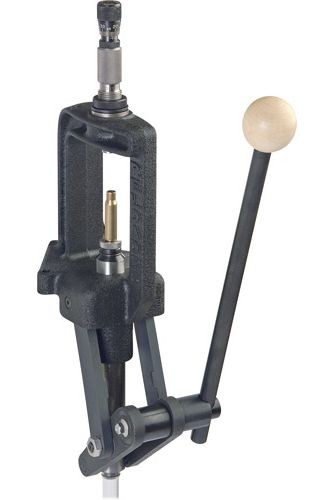
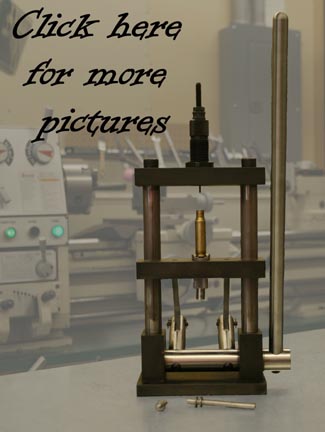
|
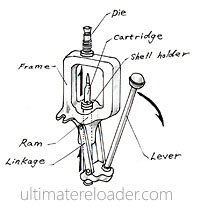
|
$ 27 Lee Single Stage ReLoader™ Press
$ 82 RCBS Partner Press
$105 Lee Single Stage Press
(same press, with
Quick-Change Die mount)
$155 RCBS Single Stage Rock-Chucker™ Press
$100 Chinese Press, from Walmart.com
$190 Press, from Tim Skinner
(Peep Sights)
videos:
v1
v2
Single-Stage. you'll change the 'die' for each step of the process,
but you're just learning... the multi-stage presses can come later.
Keep in mind that the Turret & Progressive presses are for
pistol reloading (9mm, .40sw & .45acp), rifle reloading...
you'll be doing it Single-Stage (long rifle brass does not auto-feed,
and you need a LOT more leverage for rifle brass sizing).
THIS Example ("Lee Reloader") will work fine for straight-pistol-brass
(ie. 9mm, .38, .45 )...
You'll need to mount it on a work-bench, I have mine bolted to a
board and then C-clamp it to the bench when in use.
NOTE: I DO-NOT recommend this little press for Rifle-Brass-Sizing!
-or- if you find that your handgun brass (with your Sizing-Die )
requires significant pressure. It just does NOT have the leverage.
However, now that I have a bigger one ( RCBS RockChucker)
The "Lee ReLoader" is excellent for the Seating-Die as
I can leave it set and not have to re-adjust.
I find that it is excellent for straight-walled handgun brass sizing:
9mm, .38, .45, even .30-30 goes smoothly for me.
The rifle-brass with a shoulder ( .223, .308, .30-30, .30-06 ...)
require too much leverage to force the brass into the die,
AND to remove the brass on the down-stroke.
For Rifle/shouldered brass you'll need a
BIG-ONE!
( Forster has a very nice
co-ax Press )
for the necessary leverage to RE-size .30-caliber rifle brass.
However, once brass is sized, the other die-stages
( flaring, seating, crimping )
need very little force and the Lee-Reloader press will work fine.
I have my "Lee Reloader" press mounted onto a ¾-inch plywood
board with ¼" bolts,
with the rifle-brass-trimmer mounted on the same board
I have my "RCBS Rock-Chucker" press mounted onto a 2x6" plank
with 3/8-hex bolts.
I typically only use the 'Rock-Chucker' to SIZE my rifle brass
(.223, .30-30, .308 & .30-06), then use the 'ReLoader'
for the other dies (seating & crimp).
See the YouTube videos linked above by
AmmoSmith ,
he uses the RCBS Rock-Chucker Single Stage Press for .45 reloading.
|
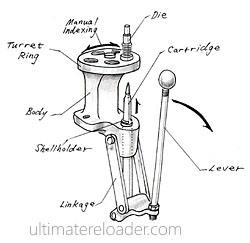
|
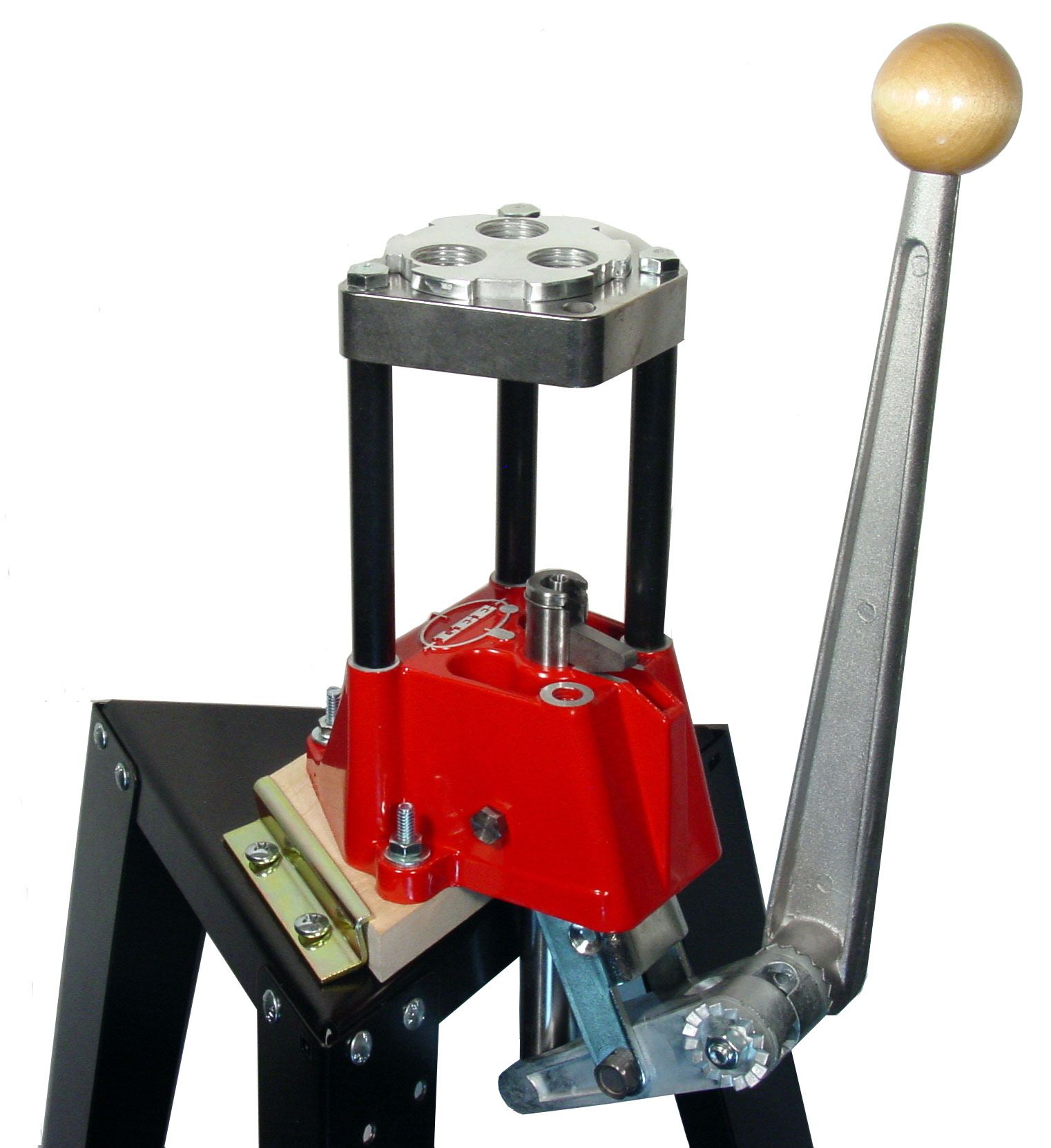
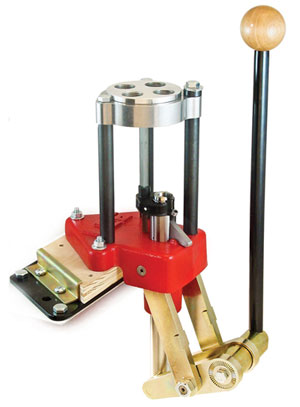
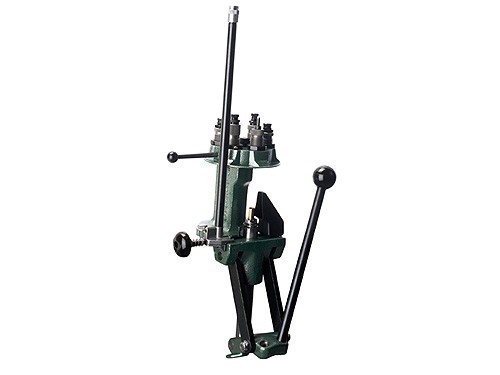
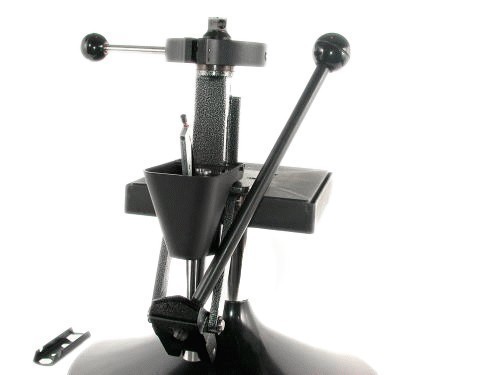
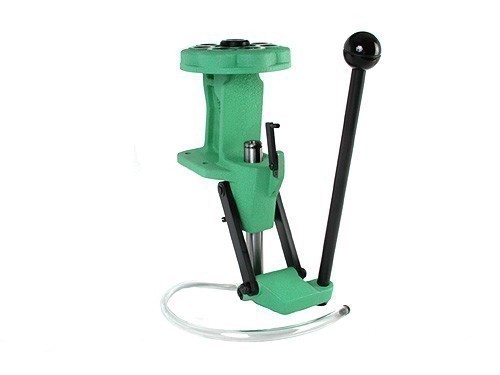
$ 73 - Lee Turret Press /3 (think: 3 Rifle dies)
$ 78 - Lee Turret Press /4 (think: 4 Pistol dies)
$206 - RCBS Turret Press /6
$160 - Lyman Turret Press /6
$279 - Redding Turret Press /7
Turret Presses:
some details
With Single-stage presses (above) you are changing/adjusting
your dies for each step and then processing several (50..200+)
pieces of brass for that step.
With Progressive presses (below) you set-up your dies and crank
each piece of brass from one step/die to the next in an 'assembly line'
manner.
In my non-experienced opinion, the Turret & Progressives are for
straight-walled pistol brass only ( .380, 9mm, .40sw, .45acp ...),
as you will need a LOT more pressure to size the Rifle brass.
Other opinions (especially the mfg/salesman) may vary --grin.
YES, I can see that the RCBS is a pretty stout piece of iron...
for sizing... but can it give the gentile-precise touch to
the specific rifle loads... like a single-stage press.
Lee makes a couple entry-level turret presses with 3 & 4
'stations' or die-positions. The dies are set in a disk/turret
on the top of the press and can be rotated as needed.
You still place your one piece of brass in the shell-holder
and activate the ram with the die in place for the desired 'step'.
UltimateReloader,
uses the Redding T7 Turret Press for .357 & .223rem
(yes, I'm "eating my words" about turret presses not being 'stout',
this should be marketed as the 'Redding T-Rex'... )
|
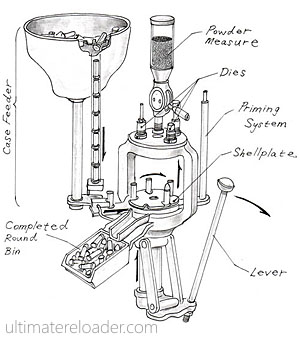
|
Dillon:
quick-info
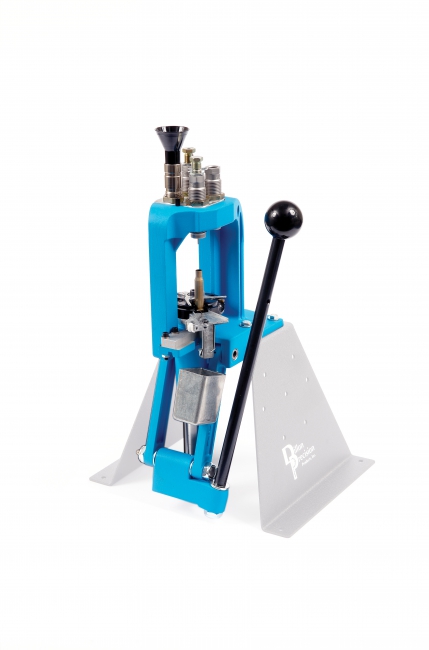
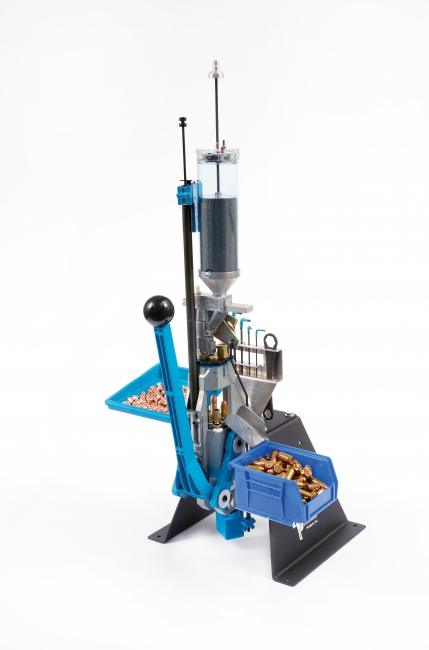
Progressive Presses:
I ONLY have the Lee-Loader small press and an old (garage sale)
RCBS rock-chucker™ press. I only use the Rock-Chucker
to size Rifle brass, I must have the extra leverage.
Flaring, seating, crimping is done on the Lee-Loader, it is
convenient and adequate and easily fits in a modest-sized
work-area.
(well, yes I have the "Lee-Loader" kits for some calibers
and the Lee-HandPress... but those just don't get used)
I have NO experience with progressives, but I have "opinions".
FIRST, if you have this voice in your head (avoid guns altogether
--grin) that keeps saying "lots of bullets, cheap",
then kindly move-on to another source of information for reloading.
MY perspective is to learn more about the hobby, physics, ballistics,
handgun(revolver & pistol), rifle(semi, bolt, lever), calibers,
etc/etc...
I reload my center-fire for handbun and rifle and enjoy learning
the various considerations and concerns of each.
I am a tool-junkie, I like to understand each step of the process
and why/when it may be desired or necessary.
Oh, yeah, 'progressives'... MY OPINION...
The progressive is to produce lots of reloaded ammo,
It is for hand-gun reloads, rifle-brass/reloads won't "feed" well,
so, you're back to your Single-Stage press.
The aspects of your settings and examination of the reload
must be learned and applied to the progressive press...
but the lessons/learning will be complicated by the
"Rube Goldberg"
contraption.
If you insist that the single-stage will be too-slow for you...
then at least realize that the 0.001" tolerances on many
of the dies, brass, primers, bullets... cannot be consistent
on a less-than quality press, consider the
Dillon equipment.
It has the reputation for long-life reliability to produce
your handgun reloads. (see hickock45 video above)
However, do a serious cost-analysis to see if the expense of a
progressive set-up is worth it. Include how much it cost to
have a set-up for alternate calibers (you want to snap-in the
duplicate primer+powder+bullet+brass+dies "head" to save time
remember...)
Don't forget that most all of the tools for brass handling
and reloading with a single-stage set-up will be needed for
a progressive set-up...
good luck, contact me in a couple years if you want to sell
your reloading stuff with a Dillon-SqDeal really cheap.
See the YouTube videos linked above by
ATGreloading,
he has the Dillon Square-Deal-B progressive press.
NOTE: the MSRP stated above is just for the base-press,
since the Dillon will not accept the "reloading standard"
tools, options and accessories, expect your purchases to more
than double the amounts stated, to have a realistic budget !
Lastly, if you take the time to view the Reloading-videos
(somewhat randomly) selected above, notice all the crap in the
background of their reloading area. They did not buy that stuff
in the 5 weeks prior to getting a video-camera to make YouTube
videos... it often takes years to gather a variety of such
stuff. Learning how to Reload is a slow process,
enjoy the journey...
| | |
|
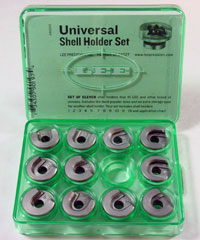
|
$25 Lee "PRESS" shell-holders
Yes, they come with most Lee 3x&4x die-sets, but not single dies,
"other" brand die-sets typically DO NOT INCLUDE a Shell-Holder.
They insert onto the leveraged-plunger ( 'ram' ) of the
press to hold the base of your brass during each of the "die-stages".
Each Shell-Holder is slightly different for the base of
each Rifle or pistol brass.
ShellHolder Ref. Chart
|
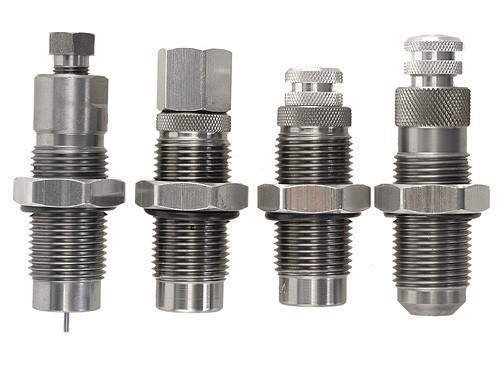
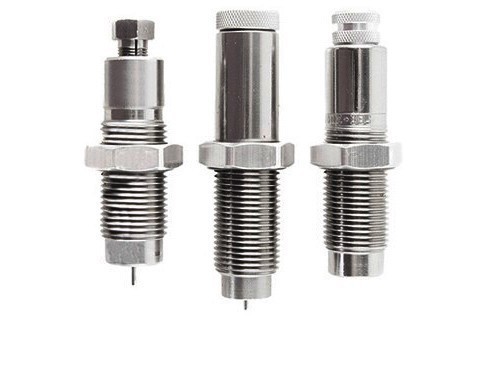
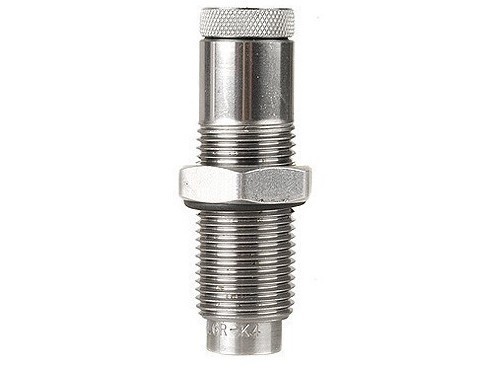
|
$40 Lee 4-Die Pistol set: Size, Flare, Seat & Crimp
$35 Lee 3-Die Rifle set: Full-Size, Neck-Size & Seat
$13 Lee Rifle Crimp Die
They come in all flavors, sizes, designs and CO$T !!
the Lee 4xPistol Die Set will be great as a starter
This section is endless... the brand, style, specification
and purpose for Reloading-dies never ends...
so, begin with a caliber that you can learn-from
and expect to purchase additional dies or die-sets from time
to time.
Lee dies dis-assemble fairly easily, take them apart to clean,
lube, inspect and learn about them.
- Full-Sizing: makes the brass "round" again +AND+
poke-out the primer
USE SIZING LUBE!! (see below)
- Neck-Sizing: for Rifle-Brass that you have fired
in a specific firearm (Bolt/Sngl action Rifle).
it only re-sizes the "neck" of the brass
and assumes it will chamber properly
in the SAME rifle,
without a Full-length sizing.
- Expanding: puts a little "lip" or 'flare' on the rim of
the (pistol) brass
to let the bullet align and ooze-into place
easily.
often called a "powder die", in a turret-press,
the powder
can be dropped thru this die into the brass.
- Seating: adjustable to press the bullet to the desired
depth,
providing the desired 'OAL'
(Over-All Length) of the cartridge.
- Crimping: puts a barely noticable crimp of the brass rim INTO
the bullet,
to hold it snug for that initial pressure-build-up.
Also, keeps the next bullet in-place during "re-coil".
Crimping:
I crimp all my reloads.
Crimping is a gentle/barely process.
If you can see/feel that a cartridge has been "crimped",
it is likely too deep of a crimp.
The reasons for crimping vary, but they all get crimped.
(as repeated else-where, the "whip-lash" effect of the re-coil
can move or loosen a poorly seated bullet while still in the Mag)
A Three-Part video overview of Die types...
P1
P2
P3
A Three-Part video overview on Adjusting Dies...
P1
P2
P3
P1 uses a SingleStage Press... to adjust each die.
P2 & P3 show the same on a Progressive Press,
P1 is adequate to get the idea...
|
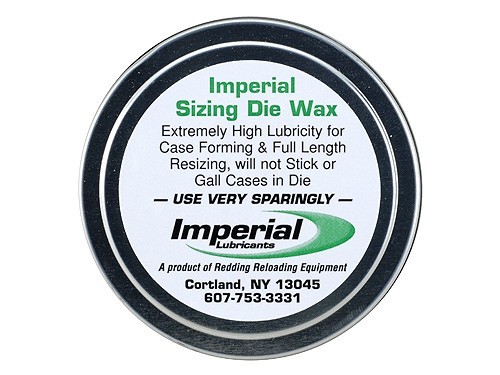
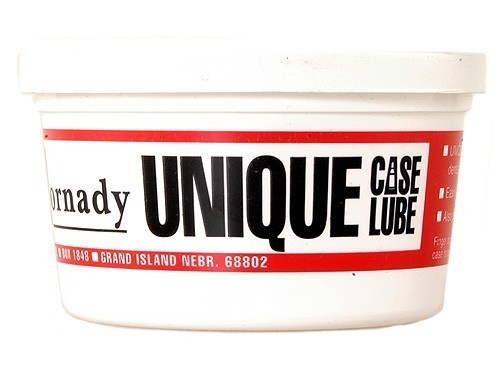
|
$ 8 Imperial "Case Lube" 2oz.
$ 4 Hornady Unique "Case Lube" 4oz.
used to lubricate Rifle brass in the Sizing-Die !!
using lube is NECESSARY !!
A variety of Brass-Sizing "lubes" from cream,
paste to spray are available.
USE SOMETHING !! when you're sizing rifle brass, it is basically
FORCED between a rod and cylinder inside the die to make it "round".
If you don't have any lube, you'll most likely have some stuck-brass...
and I mean STUCK!!
view1
view2
My first instance was with a .30-06.
I spent an evening drilling out the primer-pocket
and tapping it for 1/4x20tpi to insert a bolt and
then using a vice, managed to extricate the #$&$%&%#$ !!!
More effort than the cost of a sizing die,
but it was an educational-reminder...
learn from the mistake(s) [yes more than once ! ]
I sometimes use CRC silicon spray, found in
automotive supply stores,
LET IT DRY! before you insert your primers or powder.
|
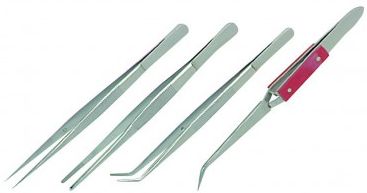
|
$ 6 Tweezers
Working with primers (below) often required picking them up,
and handling them. Somewhat difficult with your fingers.
You don't need some big assortment, but typical cosmetic-tweezers are
a bit too small for this use.
consider:
Dental-Picks,
Needle-Files,
Micro-Carving
&
Pin-Punches.
for other "needs that arise" with reloading and gunsmithing.
|
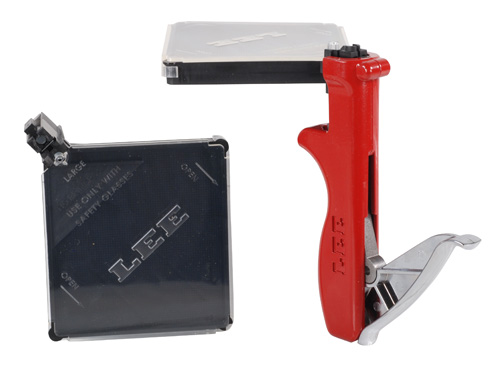
| $28
Lee Ergo™ Auto-Primer
Primer-tools come in all
flavors,
designs and
price$
I've bought TWO other brands/designs for MORE-$$ and
they are NOT "better", when all is said and done,
get the 'Lee' and get started.
Progressive/turret presses have priming stages...
I kinda like the idea of LEARNING
with primers being more than a couple inches from the POWDER !
It comes with a Large & Small tray for Large/Small
Primers (Rifle or Pistol)
If/When you begin to swap trays for the other-size primers,
consider just getting a second Lee-Auto-Prime, they're not expensive
and it's just easier than the dis/re-assembly to swap trays.
The use requires a little manual-practice to keep the
primers slipping into the slot for the next insert...
but you won't mess-up too many.
DO BE CAREFUL as a crimped-primer may think it's
a Firing-Pin pinching it and
you'll have a Chain-Reaction in your hand...
and only the plastic tray-lid
as a shield... WEAR Safety-Glasses...
and don't "force the primer".
|
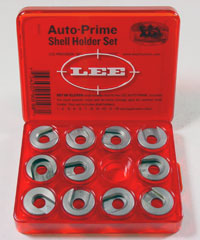
|
$16 Lee PRIMER shell-holder set
Now ain't THIS a "crock" !?!?!
an attempt to describe "Shell-Holders":
Different companies engineer/design "priming tools" in a variety
of ways... to each their own. Some have advantages for particular
circumstances or in conjunction with other equipment...
But... when it comes down to it, you want to get the new primer
into the brass and get it reloaded...
Since this is a beginner suggestion-list of equipment...
The Lee handheld primer tool is easily the best to start with.
(you can spend more $$ later to get another style, and perhaps
see for yourself that the Lee is all you needed, for any/all
pistol/rifle priming).
The priming mechanism needs a method of holding the case in place
(just like on the press/ram with the various dies),
while the new primer is inserted into the primer pocket.
Each Shell-Holder must hold the different
size/style case-head (the 'head' is the bottom of the case -??),
So, you need a specific Shell-Holder for each caliber case.
The Lee handheld primer tools have their own style Shell-Holder,
it is not the same as the ram/press shell-holder (dang-it).
The Lee PrimerTool with the Primer-Shell-Holder set is cheaper
than the other brand/style primer tools... and you can prime
all the pistol/rifle calibers with large or small primers.
ShellHolder Ref. Chart
|
|
Powder Scales...
some general items to consider:
- scales need to be on a level surface, consider a 12x12 granite floor tile
- the surface needs to be stable. not a flimsy table or stand
or on the surface of your reloading bench with all the
movement going on there...
- digiScales need a looong warm-up time to stabilize,
closely observe any scale you get until you are confident about it.
- digiScales can be influenced by nearby "electronic" stuff:
flourescent ballasts, radios, motors...
- powder-pans are often made of plastic these days...
which will produce STATIC-electricity and hold onto powder granules.
- Aluminum and brass powder pans do not store "static elec"
- Scales are easily influenced by air flow...
your A/C vent, direct breath, open window...
- When you have access to a Powder Scale. Make this observation
for youself: weigh-out a few samples of 3.0, 3.5, 4.0 grains
of your pistol powder... as precisely as you can.
THEN, carefully trickle one-more 0.1grain of your powder.
It is not very much powder and thus may not make much difference
in the firing of your reload.. UNLESS you are reloading
25/32/380acp cartridges... at 2.5-3.5 grains per load.
- (causes are beyond this web-page, but) keep in mind that a
DigiScale has some inherent misleading attributes. Take this
example:
- a scale will read-out 0.1 grains
- consider a reading of "4.0" grains
- the scale may actually measure 3.95 up to 4.04 grains
- but the display only permits ?.1 resolution and
the scale must truncate or round-up!
- THUS, your 'precise reading' is skewed over 0.1 grains
of actual powder weight
AGAIN, this should not be a problem for beginners.
Remember, 0.1grain of powder is not much powder.
- The competition shooters ( 6mmBR or 1000yd guys) have numerous
considerations for their rifle and loads, this is just one.
When YOU get there... you'll know it.
|
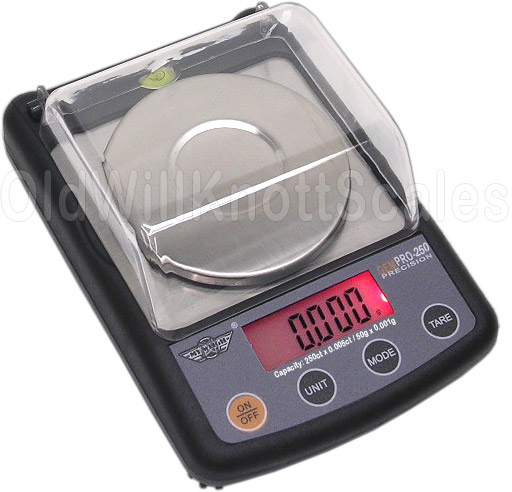
|
$160 MyWeigh - GemPro250 - 0.001gram DigiScale:
This is a Jeweler's Scale. 0.001gram is approx 0.02grains.
It has a built-in bubble-level and adjustable feet.
video on calibrating the
GemPro250 scale
15min
User Manual for the GemPro 250
|
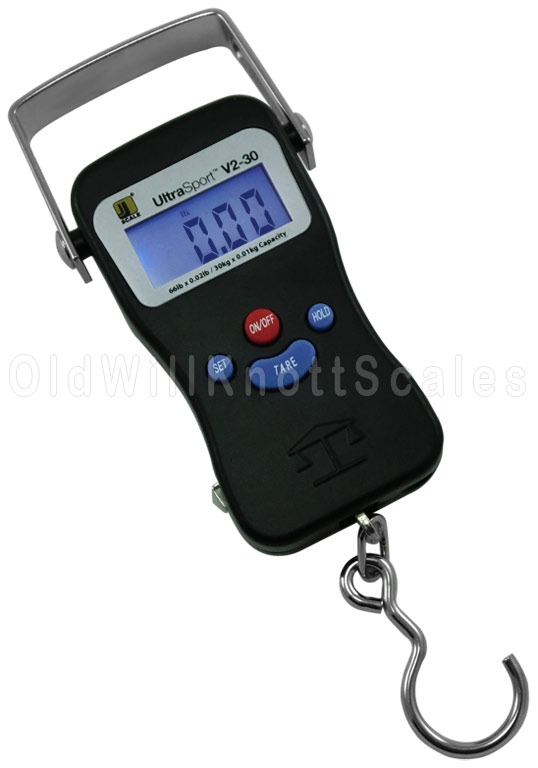
|
$25 Jennings Ultra-Sport 1oz.:
This is a Sportsman's Fish weighing scale. I use it for
a trigger-pull scale. The resolution is 1-ounce, permitting me
to adjust a 4-6-8-pound trigger pull. Then I will adjust
by "feel" (not measurement) from there.
|
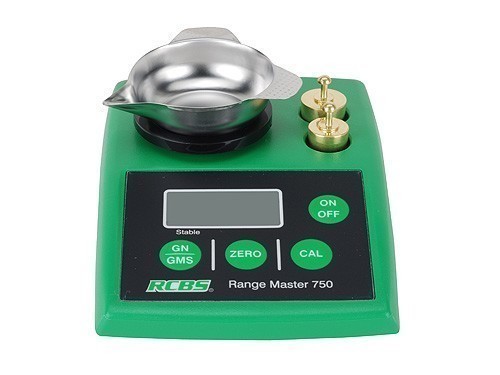
|
$120 RCBS #750 DigiScale:
I have the Lyman-$99 version and it does not stay calibrated well,
you can pay some less and a lot more for other digital-scale,
or you can use a balance-beam scale...
This model calibrates with the 20g, then 20+30g weights
to utilize two reference points (most inexpensive scales only
use one ref. wt.)
|
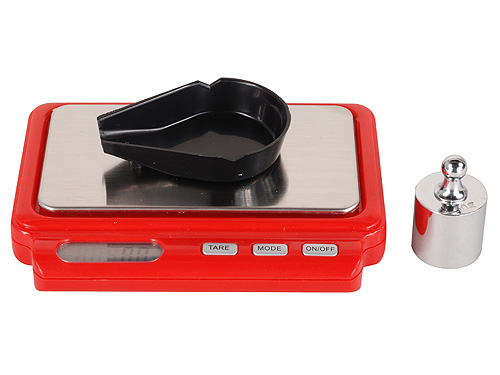
|
$40 MtM mini Digital Scale
maybe all you need is a modest little scale,
after all, you aren't weighing much anyway.
a YouTube video on the:
DS-750 digital scale (6min)
|

|
$80 Hornady Balance Beam Scale
Powder Scales come in a wide range of cost and capability.
Generally, you want 0.1grain resolution (most do).
|
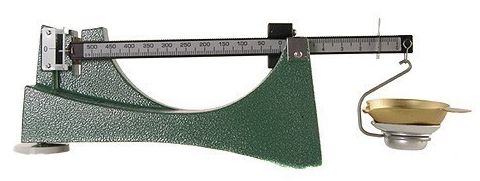
|
$80 RCBS 502 Magnetic Powder Scale
Powder Scales come in a wide range of cost and capability.
Generally, you want 0.1grain resolution (most do).
|

|
$25 Scale Calibration set
Consider an assorted-weight set for Scale calibration.
More confidence comes from getting a reliable weight measurement
over a range of known values.
Scales usually include ONE calibration weight.
|
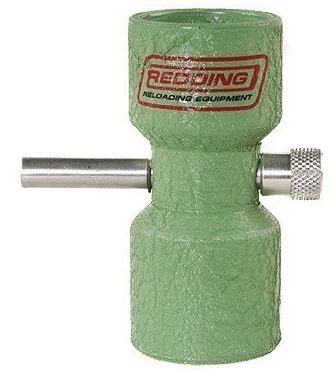
|
$18 Redding Powder Trickler
Don't get this in your first equip-order... but...
when you "scoop" your powder onto your scale, you'll often drop
too much
and need to pour it back and re-measure... you can get CLOSE
with the right
"scoop/spoon" and then trickle just a few powder-granules
at a time with a Trickler,
... and ... most are light-weight models and move around
as you twist ...
the Redding model has some WEIGHT to it and stays put !!
|
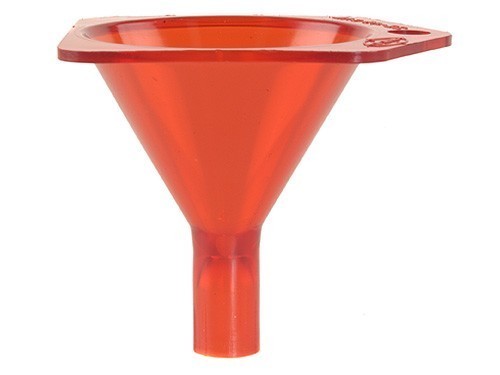
|
$ 3 Lee Powder Funnel
When your powder is measured, you want to pour it into the
(expanded+primed) brass and not spill it on the carpet.
You reload on the living room coffee table, right?
|
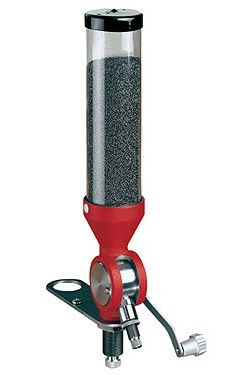
|
$72 Powder Dispensers
I have the
Hornady Powder Measure($72)
AND
THE stand($30)
AND
THE Micrometer Rifle Measure($30)
AND
THE Micrometer Pistol Measure($30), which requires
THE Handgun Rotor assembly($33)
AND ... it's quite an investment as an alternative to the
Scoop+Weigh method
AND you still need the scale to "check" the dispensed powder!!
SO something else to postpone. The two MicroMeter-Inserts may
not be necessary,
as they simply provide the Micro-Scale as your reference.
The scale does not reflect a dispensed volume, it is just
a reference-scale... you still need to calibrate with a
Balance/Digi-scale.


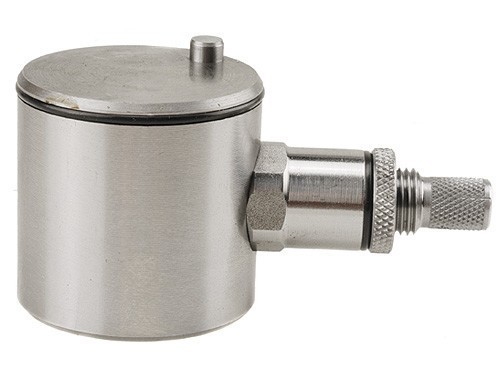
|

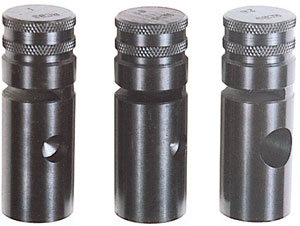
|
$43 RCBS Little Dandy
$14 rotors for RCBS Little Dandy, each
( Rotor Ref Chart)
An alternative "powder drop" is the Little Dandy by RCBS.
be aware that the "rotors" that measure/dispense the powder are
available in fixed increments for almost $15 each
(there are 28 of them). RCBS provides a table with several
popular handgun-powders and which of the rotors will dispense
X.Xgrains of that powder, usually in about 0.5gr increments
from one Rotor# to the next. You cannot fine-tune the dispensed
amount. You will take your powder and a rotor# that is close
to the amount you desire and drop/weigh to see if it is
too-little, too-much or 'just right'.
The Little-Dandy is convenient to use Hand-Held. Instead of
placing a case under the powder dispenser and dropping the powder,
you can have a tray of your primed brass while you move from
brass-to-brass dropping the powder. It can get done quickly.
The size of the rotors does not address the powders or amount
dispensed for use in Rifles, it is limited to use with handgun loads.
|
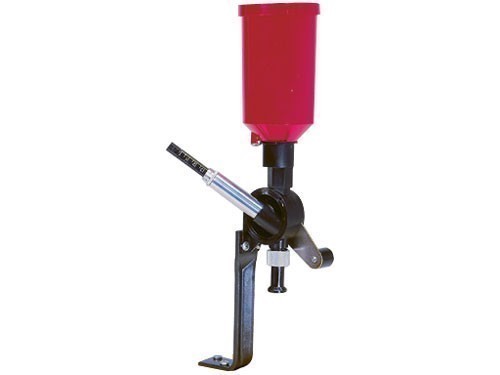
|
$24 Lee Powder Measure
If the Hornady and LittleDandy are breaking the budget,
here's the remaining candidate...
|

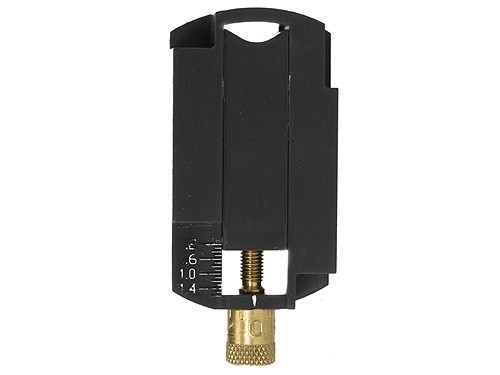
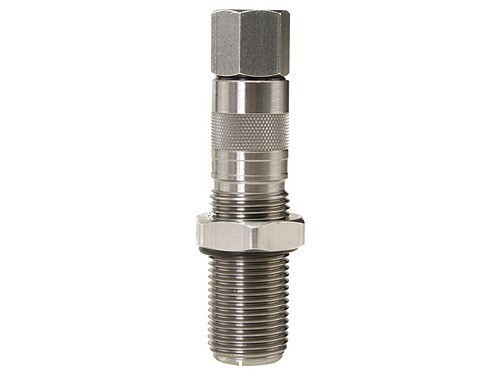
|
$25 Lee AutoDisk Powder Measure
$?? Lee Adjustable Powder Block
$11 Lee Rifle Powder Die
I am in the midst of a mind-change...
the Little Dandy is 'Just Dandy', but...
I'm considering the Auto-Disk powder measure with the
Micro-Adjust-Block. This fits onto the Pistol-Expander-Die
and when the ram is raised to flair the brass, it will
drop a powder-charge into the case (be sure it is primed first ! ).
the Micro-Block is used in-leu of the provided 4 fixed-cavity disks
and allows the charge to be fully adjustable.
the Rifle powder die can be used in-leu of the Pistol-Expander die,
for charging rifle cases - it does not 'expand'.
> Little Dandy cost more and does not have a "stand",
where do you put it with powder in it when not in use ??
> The 'Perfect Powder Mea' may not be as perfect as named.
I'm thinking more about the Lee
3-station Turret Press
img
|
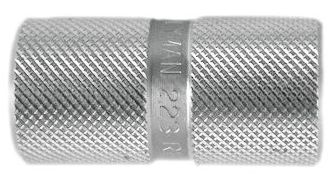
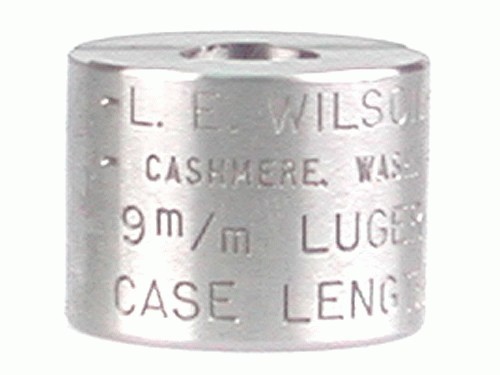
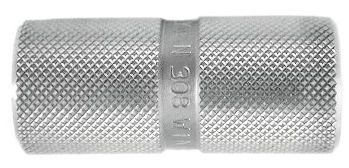
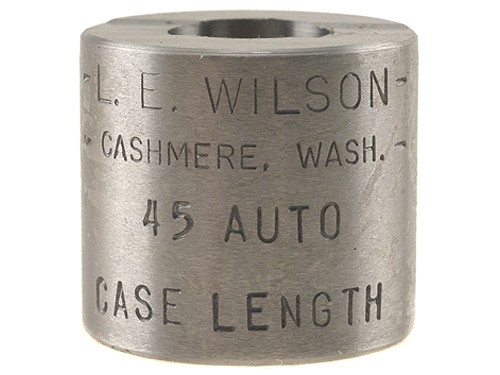
| $32
Lyman Rifle Case Gauges
$20
LEWilson Pistol Case Gauges
Case Gauges are used as a check on chambering-size of your reloads.
Caliber specific gauges can help diagnose Sizing, trimming and seating/oGive problems,
prior to actual firing your reloads.
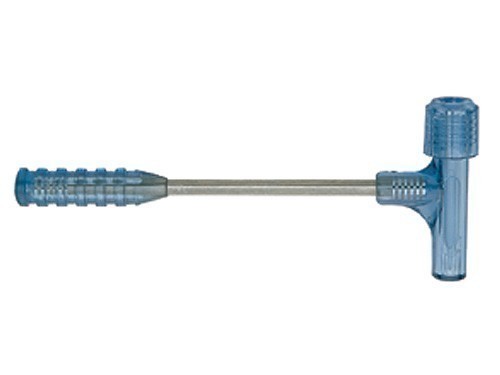
|
$15 Bullet Pullers
are used to open a seated cartridge when you "forgot" or
need to inspect because you aren't sure or for whatever reason.
(instructions).
Consider just disposing of the "bad bullet" at the range and not risk it.
HandHeld by Lyman
(uses a "collet", provided) and
PressMounted by Hornady
(needs caliber-specific collet)
Video, by AmmoSmith:
using a Bullet Puller
|
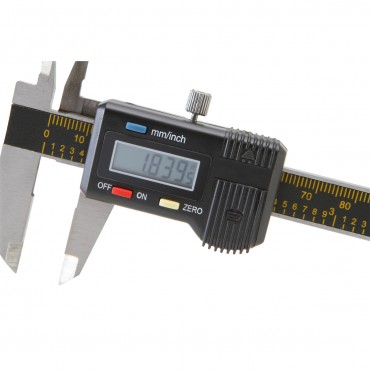
|
$18 4" Digital Caliper
Measure the Over-All-Length ( 'OAL' ) of the bullet after it is seated.
If too-long/short, you'll likely have mis-feeds and jams.
Initially, just measure your practice-ammo and duplicate the length.
|
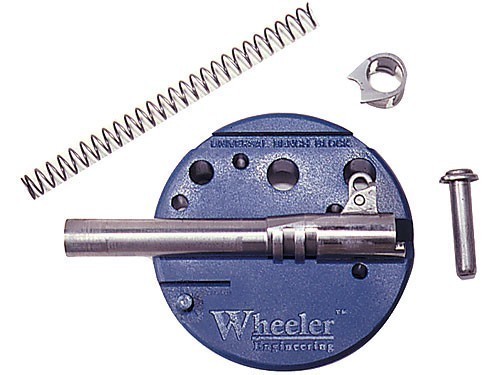
|
$18 Bench-block, non-marring urethane
a series of grooves, holes and notches to aid in steading
a variety of firearms while you insert, remove, adjust or
fit parts.
|
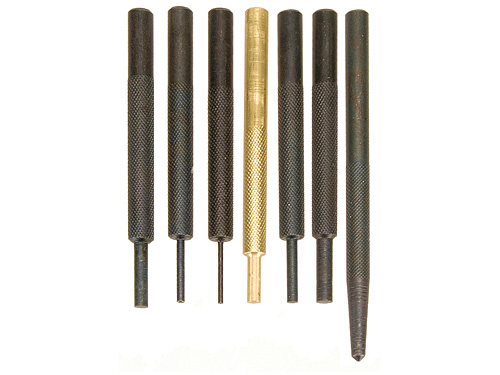
|
$15 7pc Punch set
handy set of (7) punches for general GunSmithing needs.
|
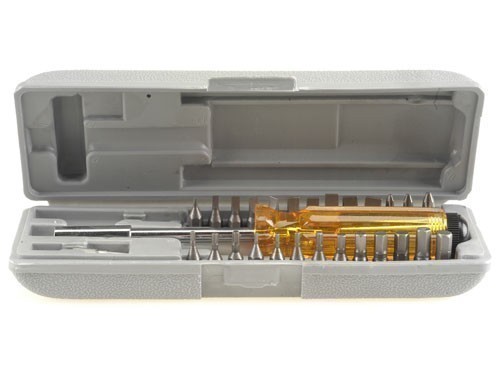
|
$15 28pc GunSmith screwdriver set
handy set of bits for general GunSmithing needs:
(hollow-ground)
slot, phillips, allen and torx bits in common sizes.
|
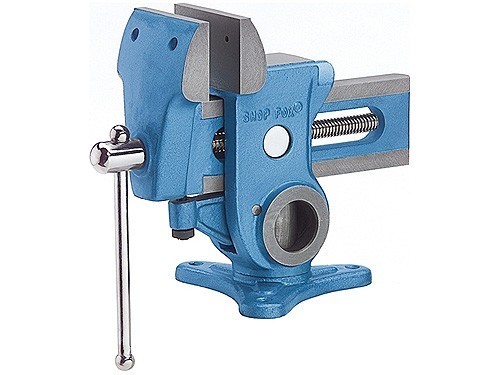
|
$50 Tilting Gun Vise
Every shop needs a bench vise, it may as well be useful.
I also have this handy $30 clamp-on
HF vise View:
1
2
3
|
|
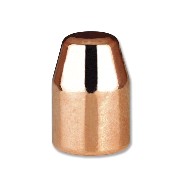
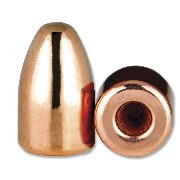

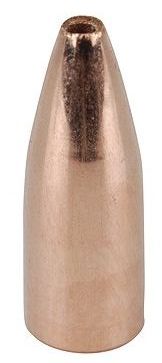
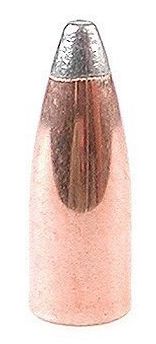

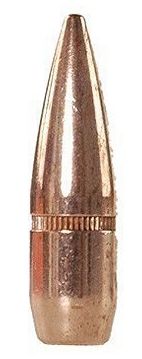
| | Bullets:
| |
|
This is not the place for a thorough description of 'bullets'...
allow me to VERY briefly describe some basic beginner-reloading
bullets.
Pistol Bullets:
Berry's Bullets (in Utah)
make a "copper wash" lead bullet in a variety of calibers
and shapes. Pistol reloads are for range-practice, so a modest
weight bullet for your caliber is all you need, until you gain
experience to load/compare others.
Berry's prices will include shipping (orders over $50 ).
For example: I use their "9mm 115gr RN" bullets
and ".45acp 230gr RN" bullets for my pistol reloads.
Rifle Bullets:
I use Berry's .30-30 150gr bullets.
For my .223, I get MidwayUSA "DogTown" 55gr bullets.
For .308 (.308win and .30-06) a Hornady FMJ-BT bullet.
"Component Bullets" as they are called (not 'ammunition'),
are available under the Remington™ & Winchester™
brand names and are usually the bullet used in the typical
"ammo" that you get when you buy a box of ammo.
Experience will suggest other bullets as you learn...
|
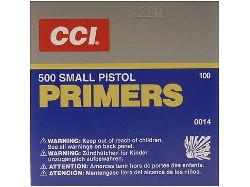
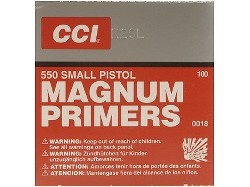
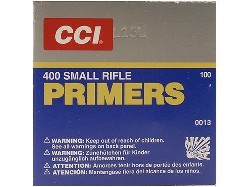
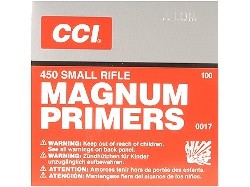
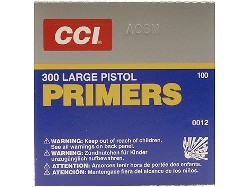
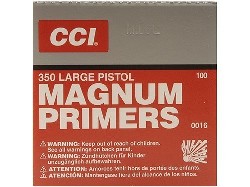
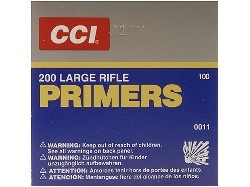
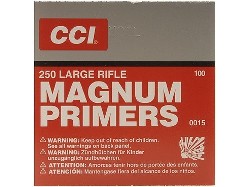
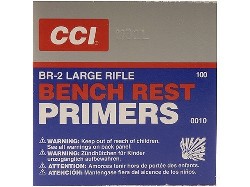
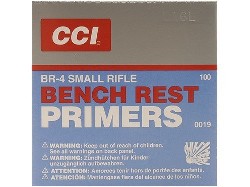
|
$ 4 CCI#300 Large/Small Pistol/Rifle Primers (box 100)
( $40 / 1000)
BUY LOCALLY. Mail-Order/UPS usually charges a Hazard-Insurance-Fee !!
Futhermore, Powder & Primers cannot ship in the same box,
so the Hazard-fees apply to each !!
Other brands exist, I happen to like CCI.
BE CAREFUL to read your Manual "load" to get THE PRIMER for the Powder!
they come in a little tray-box of 100 for $3 or so...
after you're comfortable with a "load", a box of 1000 may save a buck.
NOTE: CCI#500 Small Pistol primers are used in 9mm and .38
NOTE: CCI#550 Small Pistol Magnum primers
NOTE: CCI#400 Small Rifle primers are used in .223
NOTE: CCI#450 Small Rifle Magnum primers
NOTE: CCI#br4 Small Rifle Bench-Rest primers
NOTE: CCI#300 Large Pistol primers are used in .4x caliber
NOTE: CCI#350 Large Pistol Magnum primers are used in .4x-Mag calibers
NOTE: CCI#200 Large Rifle primers are used in .30-30 and .308
NOTE: CCI#250 Large Rifle Magnum primers are used in .45/70
NOTE: CCI#br2 Large Rifle Bench-Rest primers
NOTE: some Hot-Loads may specifiy MAGNUM Primers
NOTE: some accurate Rifle "loads" may specify BENCHREST Primers
Small rifle and pistol primers are: 0.175" diameter
Large rifle and pistol primers are: 0.210" diameter
Pistol primers are slightly shorter than rifle primers
as are the primer-pockets on the rifle and pistol brass.
Furthermore, the quantity and composition of mixtures varies
with the intended use.
The metalic-cup for pistol primers may also be of a softer metal
than the harder-striking rifle primer cup.
|
| |
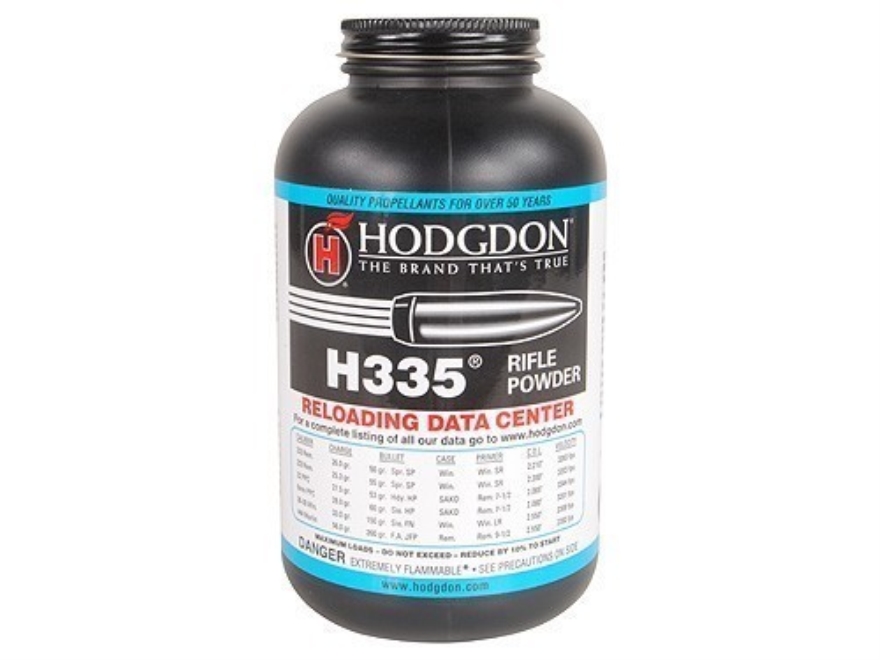
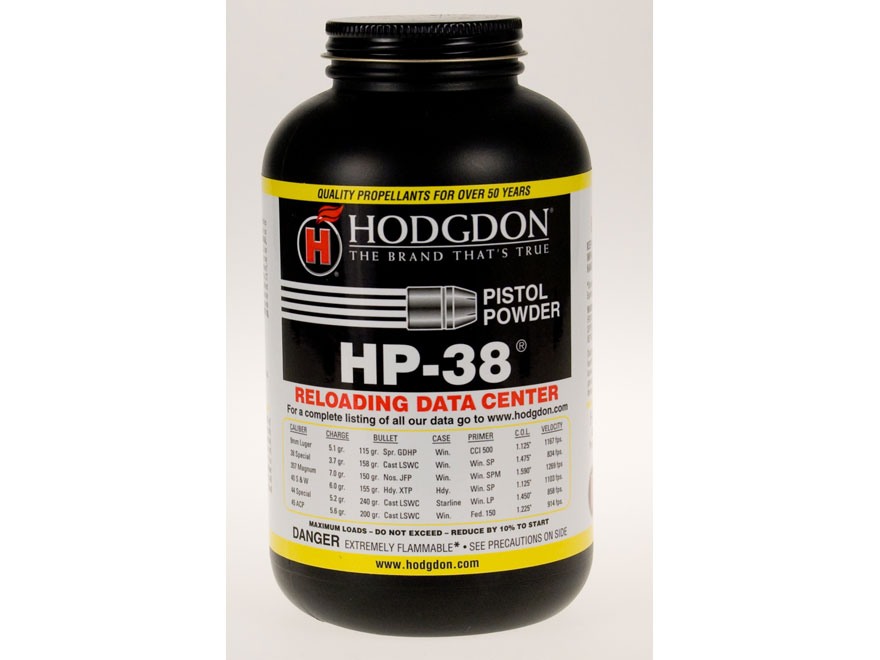
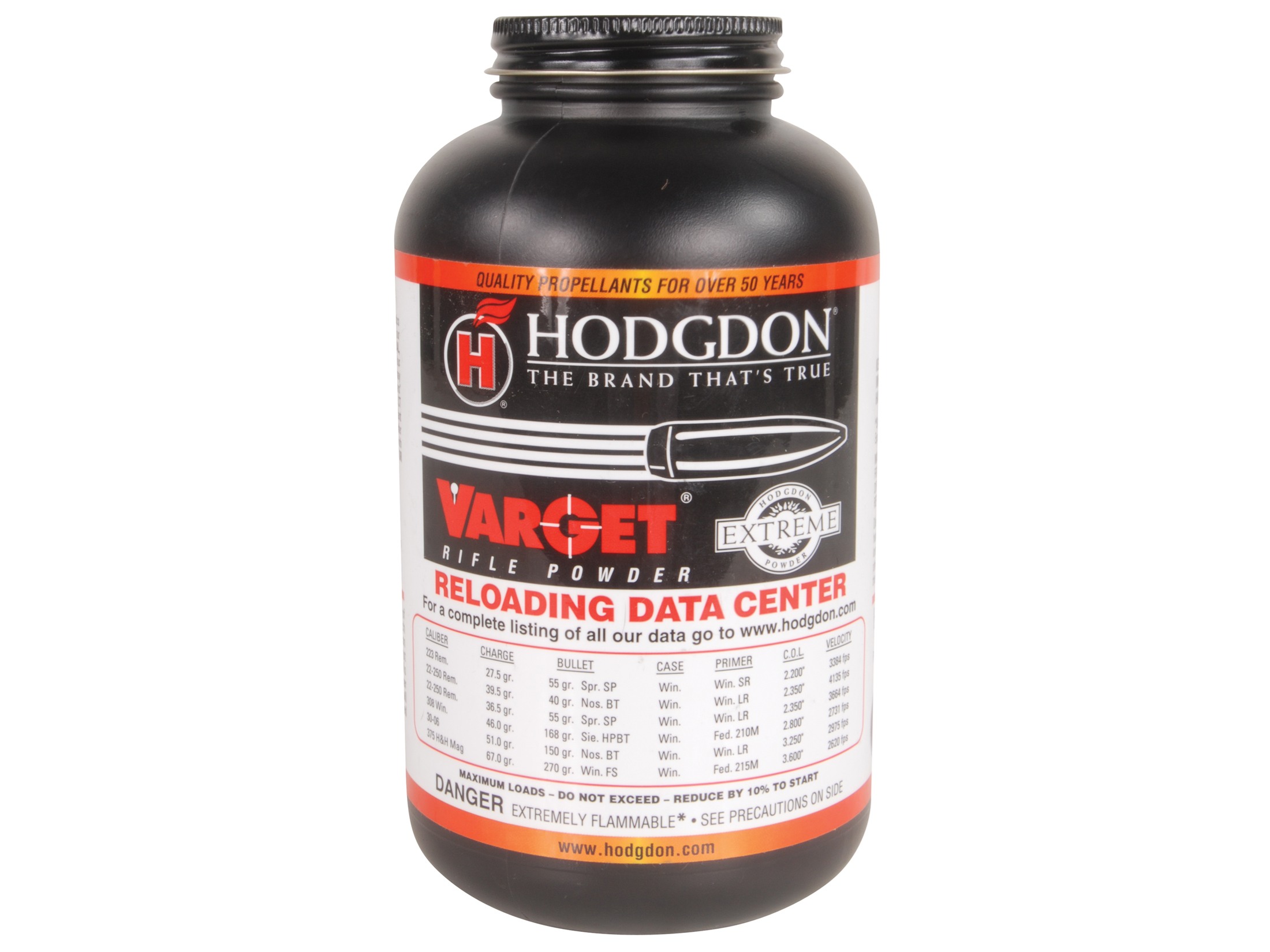
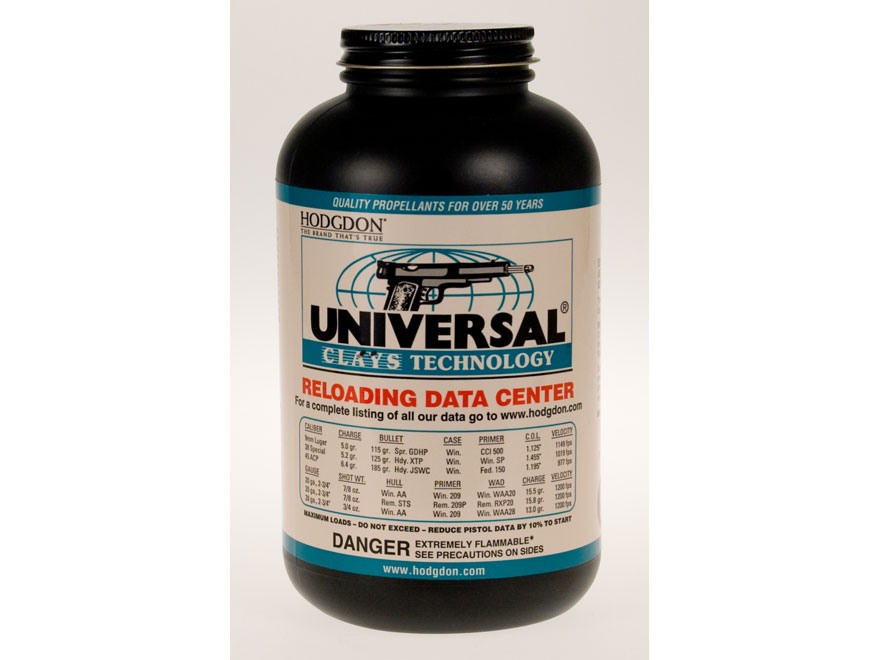
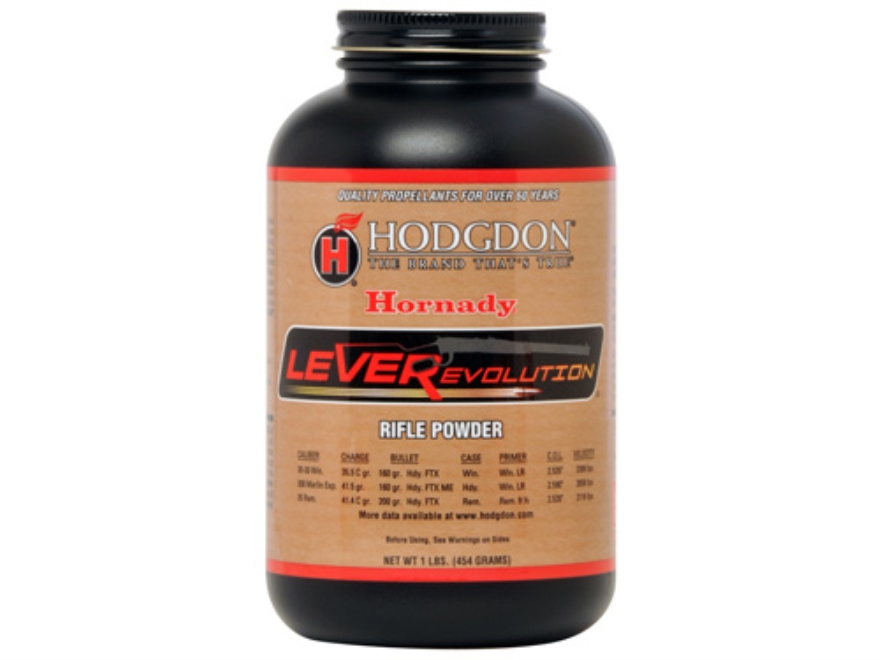
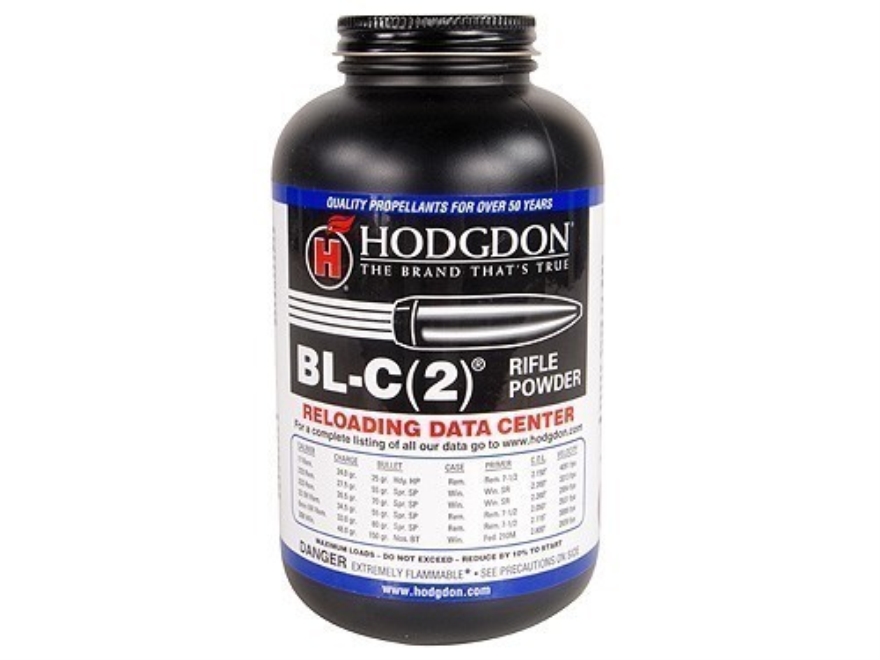
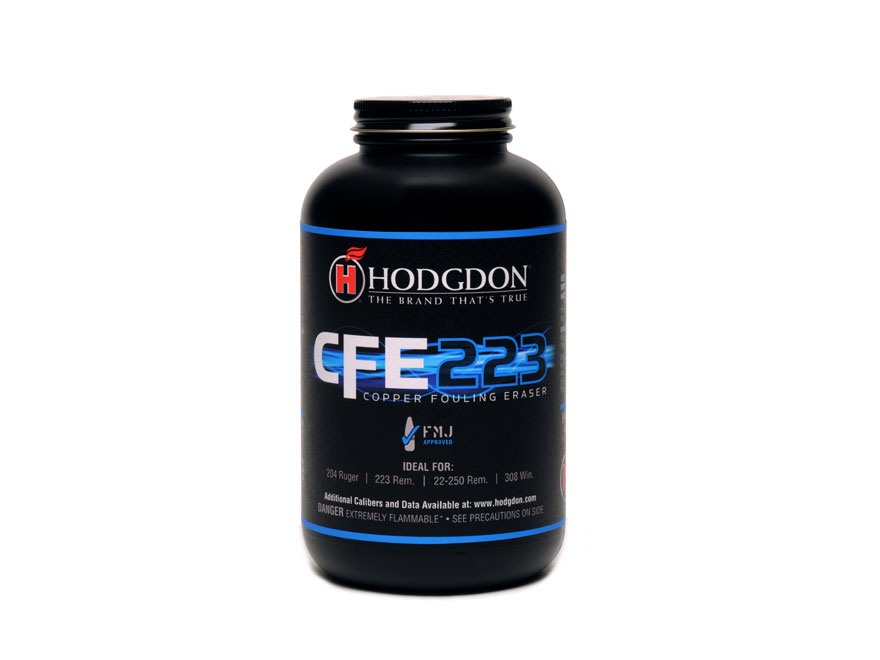
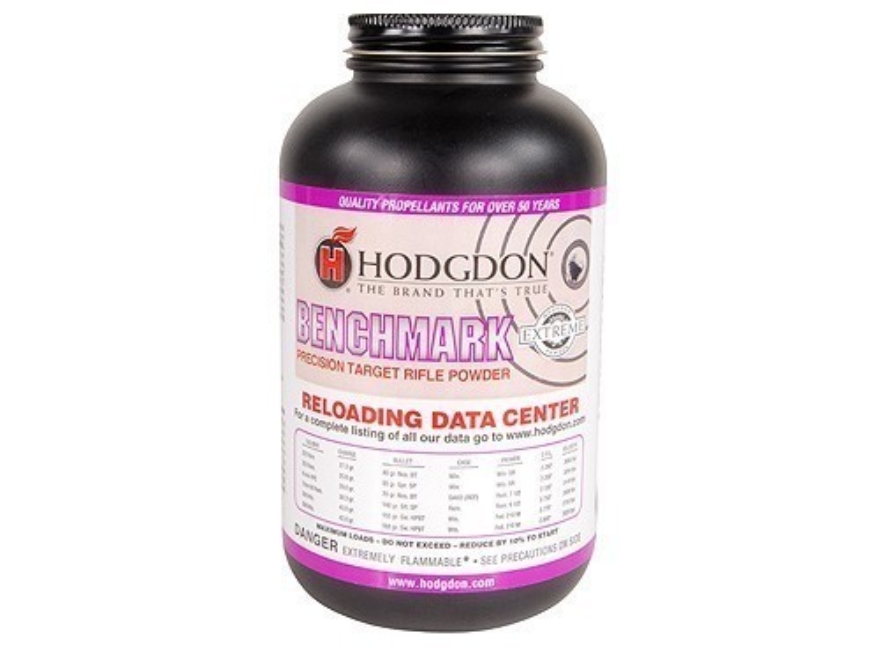
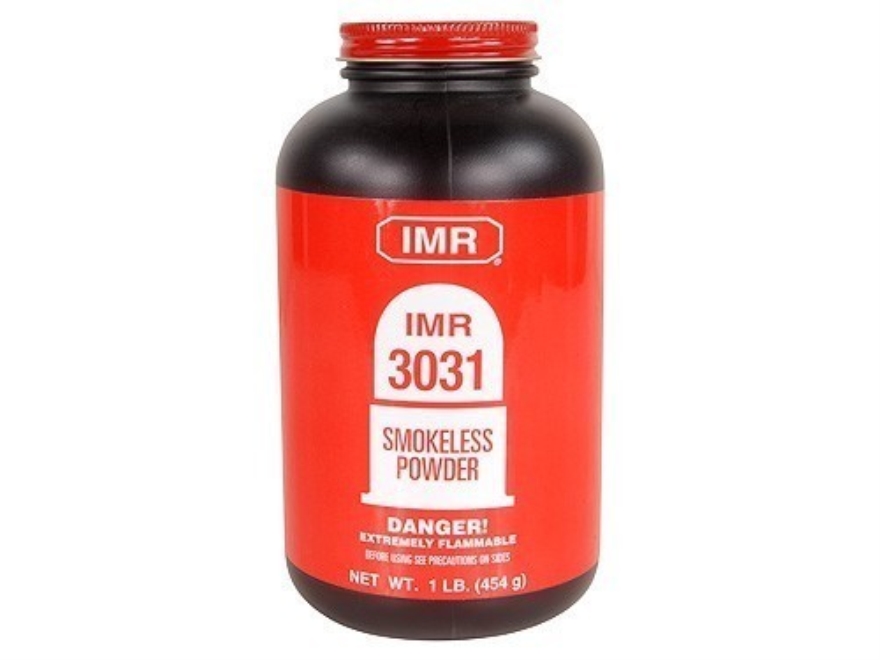
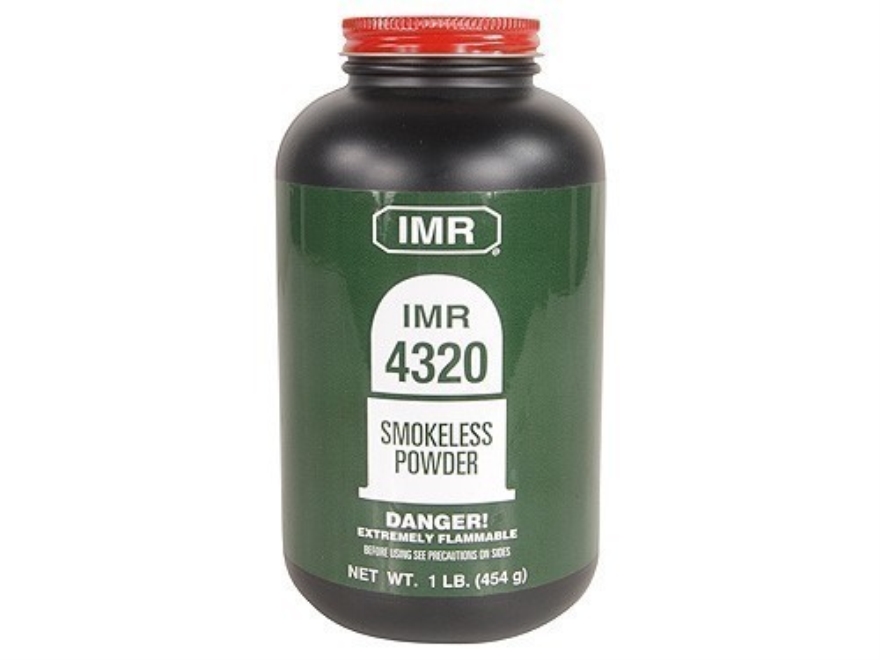
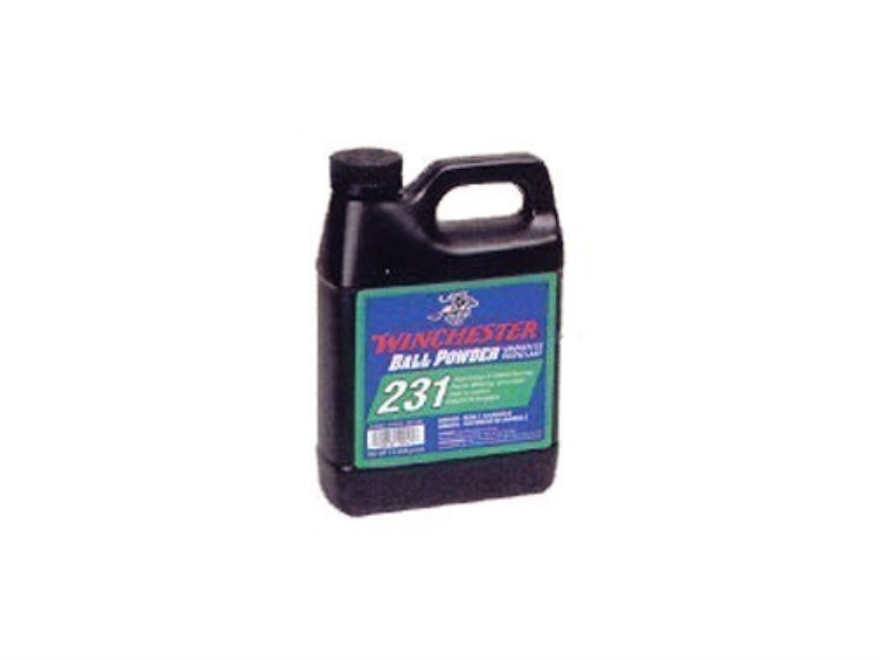
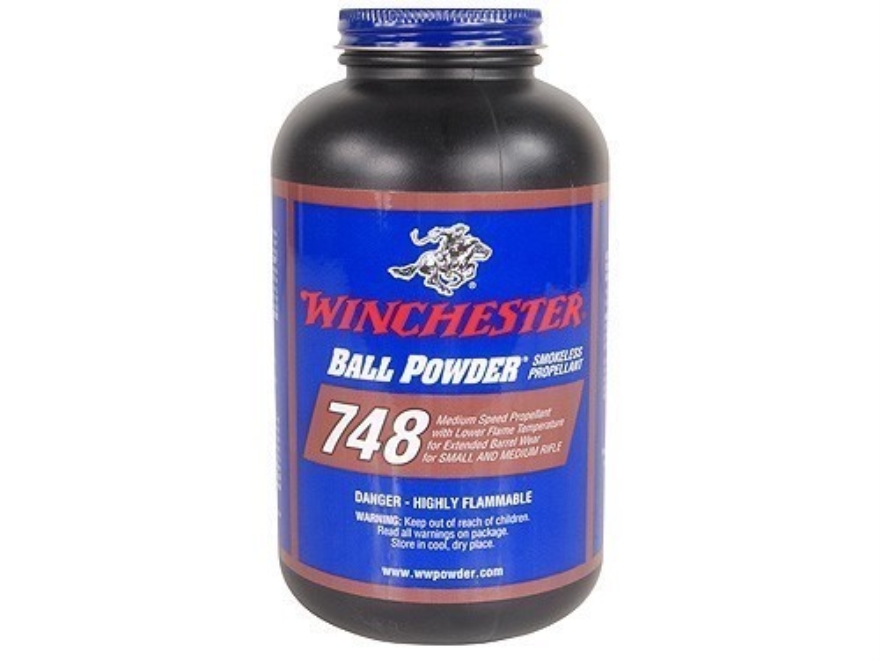
| $25
Hodgdon Rifle/Pistol Powder, 1lb =7000gr
BUY LOCALLY. Mail-Order/UPS usually charges
a Hazard-Insurance-Fee !!
Futhermore, Powder & Primers cannot ship in the same box,
so the Hazard-fees apply to each !!
Other brands exist, I happen to like Hodgdon Powders.
"Pistol Powder" is for Pistol loads, NOT Rifles. often 4-5-6 grains per load
"Rifle Powder" is for Rifle loads, NOT Pistols. often 20-30-40 grains per load
BE CAREFUL to read your Manual "load" to get THE POWDER correct !
powder comes in a Pint-Size plastic 'jar' of 1-pound, which is 7000grains
( pistol loads are about 5-6 grains... so 1000 loads in a pound)
( .223 loads are about 22 grains... so 300+ loads in a pound)
( .308 loads are about 44 grains... so 150+ loads in a pound)
Powders are sorta-like Primers in that Pistol-vs-Rifle powders CANNOT be cross-used.
Each "load" may require a combination of Primer+Powder.
NOTE: as a beginner you DO NOT want to accidentally get the wrong powder.
check/verify closely!!
NOTE: Hodgdon-Varget is an "extruded" shaped powder granule
(take a mechanial pencil lead, the really thin ones, break it into
1/8-1/16-inch long pieces... looks just like an extruded powder)
and may not dispense easily as the granules may get caught and cut,
whereas H335 is a "Ball" shape.
one example: Hodgdon makes HP-38 HandGun powder that I use for .38&9mm
and they also have their H-380 Rifle Powder...
Well, let me tell ya... I've gone to the counter at Cabela's and asked for
a "pound of Hodgdon HP-38 Pistol Powder" ...
only to be handed the H-380 Rifle Powder !!!
Thus far, I'm using Hodgdon
HP-38™
for 9mm(.38/45acp) loads
and Hodgdon
H335™
for .223(.308/30-30).
see Hodgdon
Pistol &
Rifle Powders
Hodgdon has a LOT of Pistol+Rifle "loads" Online, at:
Data.Hodgdon.com
Online Reference Manual
( here's a printable Load Manual
from Accurate Powder Co. )
The manual will contain detail reloading instructions
and provide the TABLES for your Bullet+Powder+Primer "load"
NOTE: it will show MINIMUM-MAXIMUM powder measurements,
STAY IN THE LIMITS!!!
too-little will cause the bullet to remain in the bore !!!
too-much may be your last time to pull a trigger !!
Yeah, I exaggerate a little, but as a beginner ... DO NOT EXPERIMENT !!
Most bullet and powder mfg have "load manuals" and online info.
Speer is one.
A two-part video on Propellants:
P1
P2
|
|
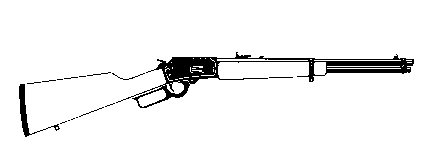
| | | |
Die adjustment/setting:
- Whatever "dies" and whichever "press", you need to adjust the die
for each stage. This description is NOT adequate,
but should make you "aware" that an adjustment is needed...
read instructions and ask for advice,
lest you make-a-bullet that mal-functions!!
- I'm assuming a Single-Stage Press. Have your ShellHolder inserted.
and your die loosely in place.
- Sizing:
bring your ShellHolder UP and screw-down the die to leave
less than a dime-thickness clearance.
Tighten-up the lock-nut and carefully try to de-cap and size a few,
observing the brass fore-and-aft.
Be sure to use that Case/Size-LUBE !! so it won't get stuck.
after Sizing, Primer-Pocket cleaning,
flash-hole cleaning and PRIMING...
- Expanding: (handgun cases)
learn how much clearance you need for an initial adjustment, the
"flaring" of the Brass-rim is slight... you don't want a wide-mouth,
just a subtle-flaring... to accept the bullet-base when Seating.
after measuring your powder ...
- Seating:
have some factory-loads handy and for your initial die setting,
place a factory-load in the ShellHolder and run-up the ram.
then slowly/carefully bring the die down... when the Factory-Load
bullet contacts the seating-surface...
back-off the die-setting a turn or so.
Tighten the Lock-nut... THEN use the Seating-Die adjustment-knob to
re-touch the Factory-Load...
this should have your Seating Die "set" to seat your bullet
to the same Over-All-Length... and hopefully perform
like your Factory-Loads (ie. length that doesn't "jam").
- Crimp:
Semi-auto loads usually need a 'crimp'.
again, this is subtle, not some obvious
rim-ring-forced-into-the-bullet,
examine Factory-Loads... a crimp takes a while to notice.
My initial use of a crimp-die (on .30-30) did not work.
I called the factory-rep and tried to explain that the die
was mis-mfg !!
Well, I'm glad I told him I lived in ID, because I was WRONG!
the Crimp-Die just barely engages the brass-rim to
make it a good consistent rim-to-bullet seam.
Keep in mind that in Semi-Auto (pistols, ARs, etc) the
Whip-Lash effect of bullets in the mags can dis-lodge a
poor-fitting bullet, so crimp-it.
- It might be best to initially "practice"
Sizing, cleaning, Flaring, Seating
and Crimping some "bullets" WITHOUT Primer-or-Powder !!
This would "waste" a couple/three dozen brass and bullets...
BUT getting it wrong can be disasterous...
AND you end up with a hand-ful of inert-bullets to give away.
There's no PRIMER or POWDER and the hole in the bottom shows it...

| 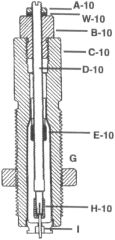
| SIZING DIE PARTS
A-10 Spindle Lock Nut
B-10 Spindle Bushing
C-10 Sizer Die Body
D-10 Spindle
E-10 Expander Button
G Die Lock Ring
H-10 Lock Nut
I Decapping Pin
W-10 Coax Washer
| 
| SEATING DIE PARTS
J-30 Bullet Seating Stem
K-30 Lock Nut
L-30 Die Body
M-30 Return Spring
N-30 Retainer Ring
O-30 Sleeve
P-30 Die Sliding Chamber
G Die Lock Ring
|
Brass:
We're speaking about ReLoading, so presumably you have your brass left
from your last visit to the firing range.
Once brass has been fired in your chamber, it is "fire formed" or shaped
to your chamber and thus re-sizing may only need "neck sizing", not Full-Length.
(more applicable to Rifle-chambers than to Pistol-chambers)
If you are tempted to pick-up range brass, keep this in mind:
- Aluminum and steel cases cannot be reloaded, put them in the recycle bucket.
- actually: Aluminum can be reloaded, just the ReSizing does not hold well,
- and they will split after a 2nd/3rd reloading...
- Steel cases have too much 'spring' to them and do not hold the ReSizing.
- Berdan primed brass
cannot be reloaded. They look and function just like Boxers,
but looking into the spent-brass, look for two-holes that look like
a snake-bite. Add these to the recycle bucket, too.
BUT... there is a tool to
Remove Berdan Primers, for $65!
info
-
Boxer primed
brass is the only type we can work with.
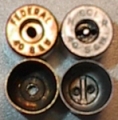
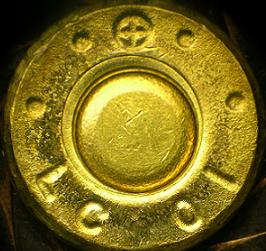
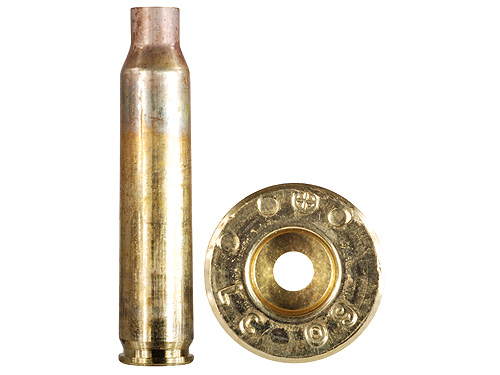
- NATO brass is often heavier and thicker by specification
and can be more difficult
to work in the hand-loading press and dies.
Look for a little "Circled(+)"
as an identifying mark on the HeadStamp.
- NATO brass is typically ring-crimped to hold the primer in place,
thus requiring you to have a Primer-Pocket-Reamer to remove the crimp.
- Chamber and Cartridge dimensions are specified by 'NATO' for
military requirements
and by SAAMI for civilian usage.
Typically,
NATO chamber dimensions are more tolerant of variations in ammo
and the cartridge is often 'thicker'.
SAAMI dimensions are 'closer-tolerance' and can result in more
consistent firing for hunting and marksmanship.
- Get to know the "
Head Stamps" of the brass you use.
(MTYWTK)
- "L C" (Lake Cities) is the large military small-arms
plant near Independence, MO
military brass often has a two-digit-year of mfg stamped, too.
- "Win" or 'Winchester'
- "R P" is Remington
- "F C" is Federal Cartridge
- "CCI", "Speer" or 'Blazer'
- "CBC" is from Brazil
- "PMC" is Poongsan Munitions Co., in
S.Korea
- "Aquila" is from Mexico
- "S&B" is Sellier and Bellot
- and many, many more...
- All things considered...
I've found that Remington Brass works best for beginning to reload.
The primer-pockets are well-formed to accept a new primer and the
brass-alloy sizes easily and holds to the sized dimensions.
I also buy the Winchester "White Box" ammo at Walmart
for any new brass I need. (I just have to get rid of the bullet,
powder & primer that is in the brass)
- I sort-thru range-brass by mfg. I've found that dies or just a
'gut-feel' doesn't like some "brands", it's a personal thing.
- Lastly, and perhaps most important, a recent interview with
Massad Ayoob brought to the forefront an issue
with reloads and defense/ConcealedCarry firearms.
Load your defense firearms with ONLY FACTORY STANDARD AMMO!!
Briefly, imagine having a District-Attorney presenting a case
that regular ammo was not good enough for you,
you had to custom-load your own ammo to use when you shoot people.
Don't be idealistic, it's his JOB to find a way to prosecute you!
nuff said.
I've yet to need a Brass-tumbler/polisher.
Buy moderate practice ammo (usually Winchester) and save brass,
there are plenty of folks at the range that do not save their brass
and do not mind if you pick theirs up... when it's good-stuff and
you've seen that it's once-fired. You'll have more brass than you need.
If your brass (or that picked up at the range) has a lot of dirt/crud
in it, you can just swish a few handfulls in some water and let them
dry for the night.
Dirty-sandy-Gritty brass can cause trouble when SIZING!
-and- steel and aluminum cases are not for reloading!
only the "brass" cases.
Note: However, I do "wash" brass...
first: decap, flash-hole, primer-pocket, chamfer...
and put several rounds ( 50 9mm, 30 .223 ...) in an old sweat-sock,
begin to fill the washing-machine with hot water and soap...
at about ¼-full, stop the water-filling and grab your "sock".
Shake and drain for 3-4-5 times at 30-45secs each...
remove the brass onto a towel and let them dry THOROUGHLY...
then... proceed to the Sizing-die... amazing how this brief effort
will get the fine sand and grit off the brass for easier movement
thru the dies...
DO NOT prime or add powder if there is any chance
of moisture in the brass!!
reloading trays
I've made a few with a small plank and a Brad-Pt(flat-bottom) bit
in the drill-press...
mostly I use the trays from the cartridge boxes
(in the Range trash bucket).
Measurement devices (except a Caliper) are available for
the bullet to bore "space", brass dimensions, bullet dimensions...
it'll all wait until later.
Other Tools
- Drill:
Rechargeable, Reversable, variable-speed 3/8"
drill is used for a lot of the brass-cleaning and prep.
Place the primer-pocket-brush in the chuck to
clean the primer-pocket is much easier than
manually twisting the brush.
I use the cheapest model I can find, like 9.6v $20
cheap one. You do not need high torque, just a spinner.
I've worn out a cheap Black&Decker model, it took
a few thousand pieces of brass, though.
I have a nice Porter-Cable drill for my other needs,
but it is NOT used for my brass-cleaning !!
Don't abuse your DeWalt, Makita or Porter-Cable drill
with the repeated burst to clean your brass.
- containers:
I have a variety of "containers" to hold brass.
By-caliber, by-head-stamp, by stage of cleaning...
I use a variety of plastic items that would normally be trash:
bottom 2" of a ½-gallon plastic milk carton,
some of the micro-wave plastic-soup containers.
The big 48-oz M&M zip-lock bags work to pick-up brass
at the range.
The round-lids from Blue-Bell ice cream are handy for
seperating and sorting range brass. Use your imagination.
- Books on your specific pistol or rifle
Gun-Guides
Kuhnhausen:
v1 Colt.45 ..and..
v2 1911 ..and..
S&W.38
Gun Digest:
1911 v1 ..and..
1911 v2
AR-15:
P.Sweeney ..and..
smithing
Glock:
Ptooma
Reloading:
ABC's ..and..
Lee Load Manual
Can't have too many books on your firearms...
for those nights and rainy weekends when you can't go to the range...
Reloading books are always handy to have to check/verify a "load"
specification for a particular bullet and powder. However, with
access to the 'net, the bullet and powder mfg have load-data online.
The book will have most every "load" for each caliber, powder and bullet,
when you are only looking for a few...
-
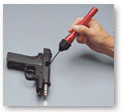
Niteize™ Fiber-light extension (needs MagLite 2xAA light)
Really cool for inspecting the inside of your brass,
AND examining the amount of powder dispensed into the brass.
( a visual-inspection prior to bullet-seating can confirm
-- that there IS powder in there -AND- only one portion --
as NO powder is going to lodge your bullet in the bore
double powder will blow up in your face... get the point ??
Not to mention to inspect a rifle-pistol "bore".
I've found these at Walmart in the "flashlight" display.
- Chronograph
A modest little device that is about the size of a brick
and mounts on a small camera tripod. You place it just a few feet
in front of your firing-line and fire just a few inches ( 6+) over the
top of it... and it will give you a read-out of your bullet speed.
Really cool to confirm your bullet speed for your hand loads.
- Ballistics
Websites, software and books galore (one is Pejsa)
can help you understand the internal and external ballistics of your bullet.
Exterior Ballistics
Remington online info
Federal
Winchester
app
SprdSht for 'Pocket PC'
|
A direct perspective: Summary
Many tools and toys have been referenced and described above.
If you are still interested in delving into the "Black Hole"
of reloading and have no prior experience or equipment, consider the
items below as your starting equipment list.
The permutations of calibers and tools are effectively endless...
This may not be the 'MidwayUSA Order List' of YOUR consideration,
but should serve as a get started and learn, expand and grow ...
Assuming a pistol and rifle caliber ( 9mm Parabellum & .223rem )
and attempting to place a strong emphasis on minimum start tools...
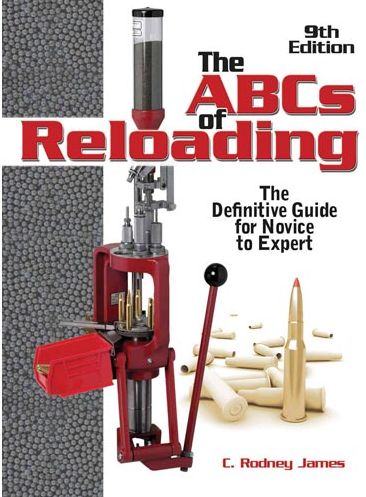
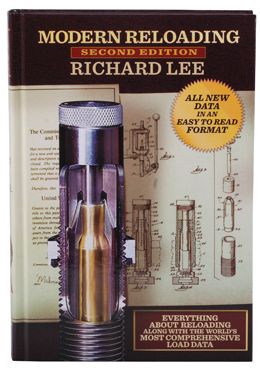
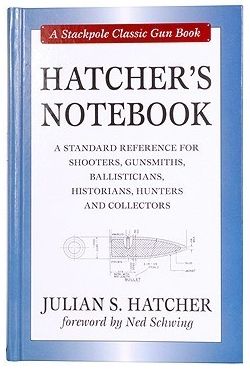
Reference
get some book(s) to read and refer-to...
not just your intelligence ( D'oh) or YouTube.com
Many bullet/equip mfg provide "load manuals":
Barnes,
Hornady,
Lyman,
Nosler,
Sierra,
Speer and
Lee.
Having one of these is an important desk-reference, but the
bulk of the text is 'Caliber/Bullet/Powder' specific load-data tables.
This information may be best referenced from the respective
Powder-Mfg Website, as they will have the most to lose/gain from
you having the best "load data", subject to any formulation,
application or breaking-news information.
the Lee manual has a lot of (Lee product examples) tool, process,
procedure information along with the load-data
for a LOT of bullet/powder pistol/rifle loads...
Probably the best reading-investment for a wanna-bee ReLoader
is to read the 1st ~125p of Richard Lee's 'Modern Reloading',
aka the "Lee Load Manual". You will learn more about why some of
the reloading equipment is made the way it is. He has a conversational
style of prose. You will learn more about 'primers' and 'crimping'
than you thought you needed to know,
it's kinda like a "Primer-on-Primers" (I just now made that up).
the book
ABC's
of Reloading is an affordable paperback book
that makes a good reference for the variety of details that
come up with reloading equipment.
Julian Hatcher's Notebook is a classic for those wanting
a thorough history. Still in print, written by an Army Gen.
with a career in small arms from WW1 to WW2 and with the NRA
in the 50s... This video may help:
Hatcher's Notebook.
My favorite section is in the appendix, "Bullets from the Sky".
Lab or Steno Notebook
Keep notes on what you have learned.
Not necessarily a detailed set of notes as a daily-journal,
but the "lessons learned" or noted things that you need to
know in order to repeat the Good-process for your
dies, cases, powders...
and the OOPS-process to avoid !
ALSO, keep track of your bullet, primer & powder inventory.
For each primer you purchase, you need to buy (or budget/plan)
a bullet. Know your (approx) powder charges for your calibers
to estimate powder ( pistols: ~5.0gr ... 1250+ charges in a pound).
A thousand pistol-primers calls for a thousand bullets and one
pound of powder. Roughly, for .223 plan ~25gr of powder.
A thousand Small-Rifle primers calls for a thousand bullets and
perhaps FOUR-FIVE pounds of powder.
Know your calibers, charges and inventory.
I (just started) logging my purchases, for Bullets, powder & primers:
Date, Cost, LOT# (for Primers and Powder) and then note when consumed.
Generally, rotate your primer/powder inventory (used oldest next).
When stored in a dry, cool, dark (and secure) place, primers & powder
have a shelf-life of years... just don't ignore/forget what you have.
**IF** we found ourselves with a new environment and could no longer
purchase ammo, primers, powder or bullets... would you load your
remaining (bullets/ powder/ primers) and have a grossly-disproportionate
quantity of un-usable inventory... ?
Keep your inventory in-sync ...
Now, don't tell your wife what I just said, she will think I told
you to Keep your inventory in-THE-SINK --grin.
Brass
Due to the variety of brass-alloys and other primer-vs-primer pocket
frustrations (hardness & primer-ring-crimps, for two),
Learn to ReLoad using Remington-ammo,
their brass is well-suited to reloading and presents fewer problems,
over-all, as you begin.
Range-brass
START with your own purchased (Remington) ammo and keep your own
fired brass to reload and use in that same firearm.
As you gain experience from a few hundred (sucessful) rounds,
you will be temped to pick-up other/range brass.
This is fine... the learning-opportunities are endless, just take care
to compare and apply your experiences that have worked!
To be avoided or postponed:
Berdan-primed-brass, Steel-cases(steel springs-back from the sizing
too much), Aluminum-cases(pretty easily begin to split after a second
reload), Nickel-Plated brass(save for later, it is a stiffer-brass-alloy),
noticably-bent cases, corroded/badly-stained cases,
NATO-brass (it is thicker/harder than yours and often Primer-Crimped)
and anything that just doesn't look and feel right...
If you are a 'pack-rat', then skip this item, you won't listen anyway.
It is so easy to accumulate a LOT of brass...
if you want to keep it in tubs and boxes as scrap-metal value... fine,
but if you intend to clean and reload it, it is really easy to have
FAR TOO MUCH brass... only YOU can estimate a reasonable brass-count.
Consider a re-use/life of a brass case as 3-5 reloads (easily more,
but just figgerin' ), so for a thousand primers/bullets in your
"inventory", you only need to have about 250 pieces of brass.
De-Capping
Get the Lee Decapper-Pin & Base in .223 (it can be used for ALL
pistol and rifle calibers. Get the old primer OUT.
Brass Preparation
Get the Lyman VLD Chamfer tool
and Lyman DeBurr tool with Handles,
these two will clean-up most case-mouth abnormalities. If not,
toss the brass (or save until you learn/get other equipment).
Get the RCBS Primer-Pocket-Brush (Lrg & Sml with handle).
This will clean your primer pockets. I suggest using an
inexpensive (ie. CHEAP) rechargeable/reversable drill, not the
provided handle.
Wash your Brass
I use warm water with just a drop of dish-washing liquid and
vigorous-agitation for a couple minutes in a plastic jar.
RINSE and DRY-THOROUGHLY before adding any Primer/Powder.
You can Size/flare, but insure that the brass is 'dry'
before you proceed to insert Primers/Powder.
To each their own... I have evolved to Wash/Dry my Pistol brass
but "burnish" my rifle brass to a polish.
I use the Lee-lock-stud and holder with my drill and a small
piece of fine ('0') steel wool to get a very clean and polished
piece of rifle brass.
Sizing (and Flaring Pistol brass)
Get the Lee 4x Carbide Die sets for Pistol
(Size, Flare, Seat, Crimp)
The soap-film remaing on the CLEAN pistol brass will serve as lubricant.
Get the 3x Carbide Die sets for Rifle
(FL Size, Seat, Crimp) Neck-sizing can come later.
Get the Hornady Unique (or Imperial-Sizing) Wax, to be applied
VERY-SPARINGLY to clean Rifle-brass before sizing.
Press
Get the RCBS Partner Press.
It is excellent for straight-walled Pistol brass reloading
and can handle the .223rem (larger Rifle brass WILL NEED
much more pressure, like the RCBS Rock-Chucker.
For Pistol-ONLY reloading concerns, the Lee ReLoader Press
is adequate). You will definitely appreciate having the smaller press
for ALL "press-strokes" other than Rifle-Sizing.
Either the RCBS-partner or Lee-ReLoader work well for the low-pressure
press strokes (flaring, seating, crimping).
Mount it on a 1x4x8" board to be C-clamped to your work-table.
Images:
1
2
3
Trimming
Pistol brass just does not need to be trimmed.
If it does, toss-it or save until you get more equipment.
Some Rifle cases may need some trimming.
Get the Lee Cutter-and-LockStud with the .223rem
Sizing-guide and holder.
A basic 'Caliper' to insure that diameter/lengths are as needed.
A Case-Trimmer is an expensive 'first-tool', wait until later.
Priming
Get the Lee Ergo-Primer-Tool
with the Lee Primer-ShellHolder Set.
With this you can prime all pistol/rifle calibers.
Use CCI-standard Small-Pistol Primers (9mm)
and CCI-standard Small-Rifle Primers (.223rem)
Pistol Primers burn FASTER than Rifle Primers.
Rifle Primers burn SLOWER than Pistol Primers.
DO NOT MIX, Confuse or substitute your primers!!
Powder Measure
Get the MtM-miniDigi-Scale.
Use Hodgdon HP-38 Pistol powder for 9mm:
(if not avail, get Winchester 231 Pistol Powder)
approx 4.5-grains per load
(Granule shape: 'flake')
"loads" vary by bullet shape/wt
Use Hodgdon H335 Rifle powder for .223rem:
(if not avail, get Winchester 748 Rifle Powder)
approx 23.0-grains per load
(Granule shape: 'ball')
"loads" vary by bullet shape/wt
Pistol Powder burns FASTER than Rifle Powder.
Rifle Powder burns SLOWER than Pistol Powder.
DO NOT MIX, Confuse or substitute your powders!!
NOTE: Smokeless GunPowder has many characteristics,
see Ultimate-Reloading's
"Basic Reloading"
for more powder info.
Powder "loads"
Consult Hodgdon Ref
for confirmation and details on specific Powder for Bullet-wt load data.
Hodgdon's
Online Reference Manual
and a Load Manual from
Accurate Powder Co.
Powder Dispensing
Get the RCBS Little-Dandy Powder dispenser.
Get a few of the Rotors: #7, #8, #9
These will dispense about 4.5-5.5grains of HP-38 Pistol Powder.
The 'Dandy' dispenser is designed for handgun powder "loads",
but careful measurement of your Rifle-Powder can determine
a reliable 3x, 4x, 5x drop that will get close enough to your
rifle-powder "load".
For H335 Rifle Powder, measure/calculate using the Rotor
that will permit dispensing 22-24grains with FOUR-drops.
DEPENDING upon the Powder... and not some exotic/extreme caliber...
Pistol "loads" are generally in the 4-8grain range...
so, a variation of more than 0.25-0.50 grains can be significant.
Rifle "loads" are generally in the 20-60grain range...
so, a variation of more than 2-4 grains can be significant.
Yep, the 'Little Dandy' and a few rotors ain't cheap, maybe $100...
A very good alternative is the Lee Powder
Scale($25)
with the
Measure($25)
INSPECT
Insure that you utilize some methodology that double/triple validates
that you have the primers inserted properly and the CORRECT powder
is dispensed into each case. ANY MISTAKE is too costly and dangerous!
(remember: Seriously-stained underwear needs to be replaced! )
Line-up your powder-cases and visually inspect for "same amount" of
powder. If a/few cases look like too much or too little powder,
re-calibrate/check your dispensed amount of powder and re-charge
those cases. This is easily corrected at this point and
potentially dangerous if you continue with a poorly-charged case.
Using a powder-drop, give a moments pause as you rotate-the-handle
to permit the powder to flow into the measurement cavity
and when you rotate to dispense into the case.
This will help insure that you are getting the same "load".
Bullets
Use Berry's (9mm HBRN 124gr) pistol bullets.
Use Hornady (.233 FMJBT 55gr) rifle bullets,
FMJBT or
SPP.
Seat & Crimp
using the Lee dies: seat your bullet to the desired depth (OAL)
and place a modest/light crimp of the case-mouth into the
Pistol or Rifle bullet cannelure (the little ridge-ring around
the middle of the bullet about where the case-mouth would be).
Case Gauge
Get the cartridge max-case gauge(gage?) to check if your
finished/crimped cartridge will fit the standard chamber size.
Shoot your ReLoads
The beginning reloader should make an effort to start with one
handy caliber (say 9mm) and only reload pehaps 25 rounds.
At the range shoot 5x factory ammo then 5x reloads,
make mental (and written) notes as to how they compare:
magazine-feed, chambering, jams, ignition, "on the paper", recoil...
This will help you to decide to re-measure and adjust your
bullet seating or (carefully) adjust the powder "load".
*IF* you decide you need just a little more "oomph", be aware
that more powder is not necessarily the adjustment.
Case volume must build to a pressure for the bullet to move,
and often LESS powder allows for more pressure to build-up...
Consider reloading your 25-cases as: 5 the same as previously
as a 'control', then 10-cases with only 0.5gr more powder
and 10-cases with 0.5gr less powder. Be sure to clearly label
which is which !
DO NOT take this paragraph as "load" adjustment instructions!!
This is something you need to study, READ your LOAD manual
and observe the pressure/velocity estimates for posted loads.
Ask other reloaders at the range, post questions to
internet forums... but adjust gradually and carefully.
If you blow your fingers off, then you never will know what
"load" would have worked best.
As a beginner, stay near the 'start load' amounts and only
adjust to get your reloads to function adequately/normally.
Misc:
- a rechargeable/reversible elec drill. NOT a DeWalt, Makita or Porter-Cable,
but a cheap-one from Harbor-Freight.
- access to common tools: screwdrivers, pliers-big&small,
open-end wrenches, knife, small-hammer, Allen-wrenches(mm&in),
rags/shop-towels, inspection-light, tooth-picks & Qtips,
some basic FaceMask-Filters and a variety of containers...
- Gloves: sometimes you are holding something that is HOT, jagged,
sharp or might go BANG!! ... consider having some gloves handy
to help protect (preserve) your hands...
- Glasses: be careful, you can "poke your eye out" with this hobby...
seriously, consider wearing eye-protection or shooting glasses
while you reload, especially handling the primers/powder.
- A passage in the 'Lee Load Manual' by Richard Lee gives an example
of how 'lead poisoning' for a reloader is highest when breathing
the "primer dust" (ie. cleaning the primer pockets or the
tumbler-dust from case tumbling) due to the chemical make-up
of the primer-substance having been 'oxidized' (burnt).
I think I understand that "lead poisoning" comes from ingestion
of LEAD-OXIDE, not 'Pb' lead metal...
How many vets have bullet(fragments) in their bodies...
and the body just coats-the-foreign substance and not absorbing
any of the metal... but lead-oxide is a different chemical.
This is one of my reasons to not use a tumbler...
but I need to be vigilant when cleaning primer pockets !
- Permanent-marker Black Pen for writing on the brass-cases and containers.
- For each set of New-Dies: dis-assemble each die to inspect for factory
"burrs" to be removed and the factory 'gunk-film' that you don't want
smeared onto your cases. Come to understand how the die functions
and how the case will inter-act as you run the ram up/down,
to better understand what you are 'adjusting' with each die.
Use a drop of gun-oil on each of the threads and run the nuts/adj
from one end to the other to insure that the threads are clear.
Each die should be re-inspected, cleaned and lubricated periodically,
I will suggest every 250+ rounds, perhaps less often if your experience
shows little or no accumulation inside the die and where the case
is shaped by the die.
Notice the Pistol-sizing-die is used to make the case
"round on the outside" while the Pistol-flare-die is used
to make the case "round on the inside" as it also places
the 'flare' on the case-mouth.
Notice the Rifle-sizing-die is used to make the case
"round on the outside" while the 'ball' on the de-capper-stem
will make the Case-Neck "round on the inside".
There is no 'flare' on the Rifle-case-mouth.
- Make 'Reference Cartridges' and label them:
for expected diameters/lengths of the brass and
'OAL' (Over All Length) of the bullets you make/use,
to have handy for comparison/measurement.
Use both a Factory-Cartridge of ammo that works well in your firearm
and make your own DUMMY-LOAD (ie. NO primer & NO powder),
just the brass and seated bullet.
- A basic set of GunSmith Hollow-Ground tip screwdrivers,
(not: Hallowed Ground) or the 0.25"-hex-shank bits.
- Blocks:
1x4x6 of hard wood as a non-marring surface to pound-against,
4x5x0.4 steel plate as a light-weight anvil,
GunSmith Bench-Block of non-marring, grooved, drilled ... work surface.
- Some Steel-Wool size:ZERO (or 'ought') and a drop of Gun Oil
on a small piece of steel-wool pressed onto a spinning case
will clean up a surprising number of dirty-looking brass.
This will then permit reading the head-stamp
and polishing the case-mouth for better seating/chambering.
ReLoading is the kind of process that you cannot do well
until you have some experience, so expect screw-ups!
But take it step by step and know what you are expecting to
do and how to know that you have done it properly.
Good luck...
THINK! and try not to win the next 'Darwin Award'...
|
| |
















































































































